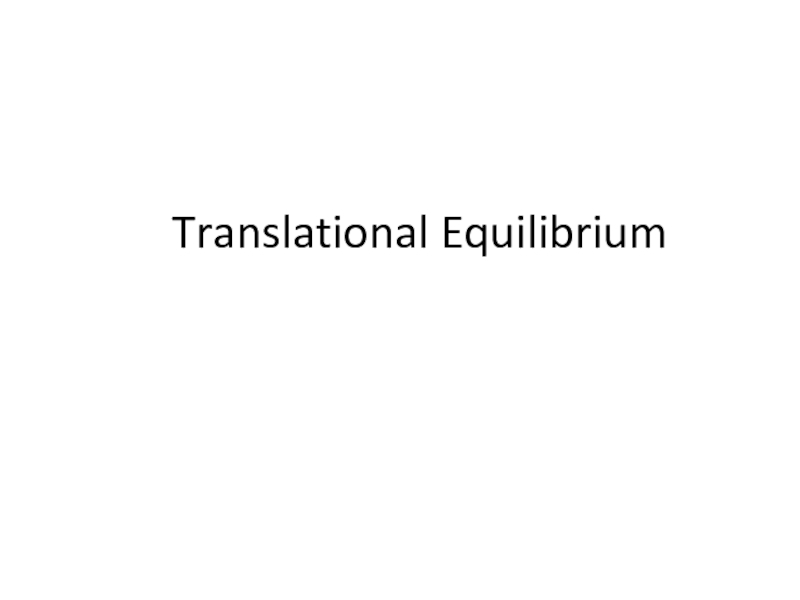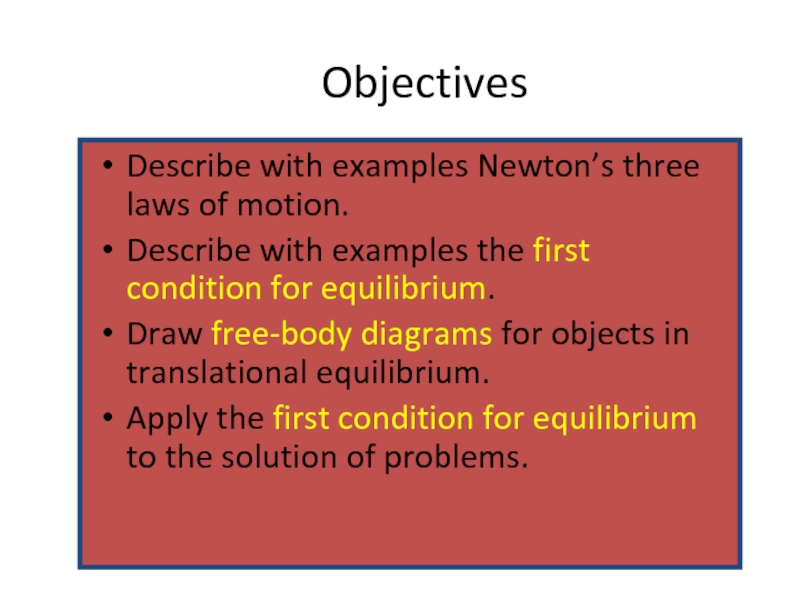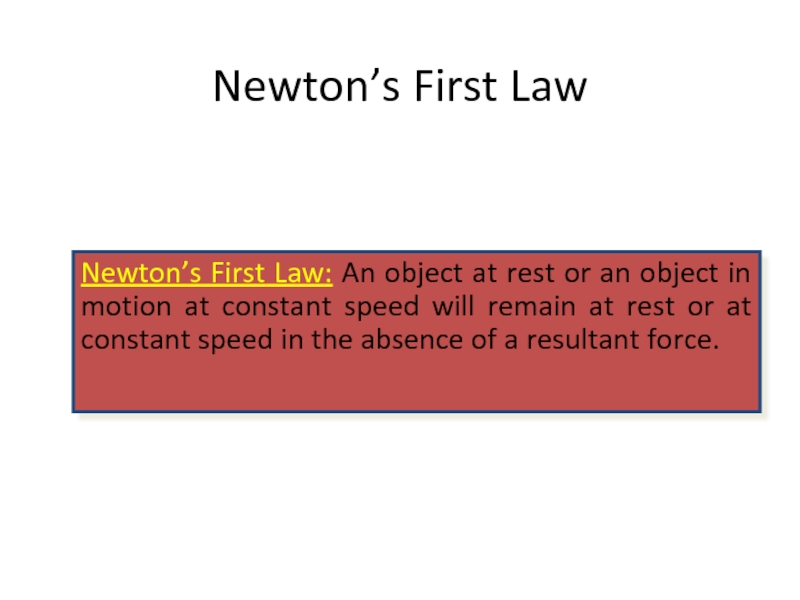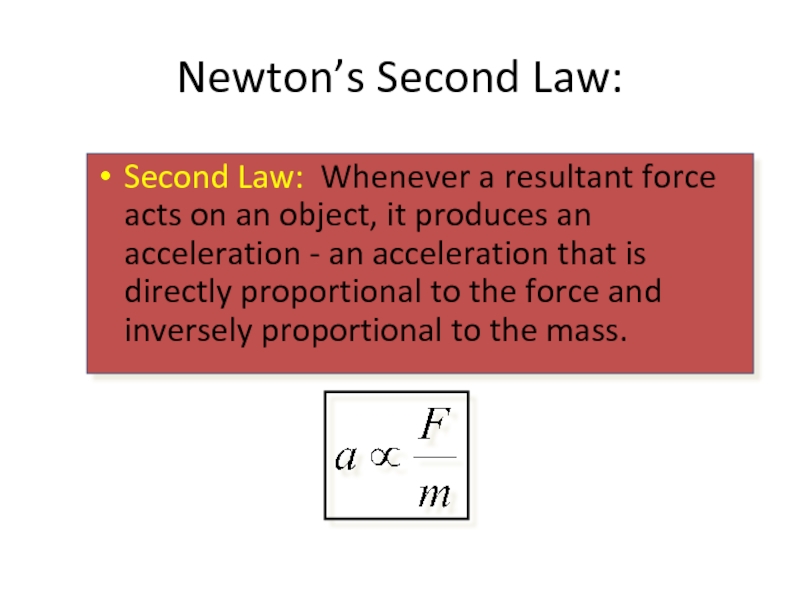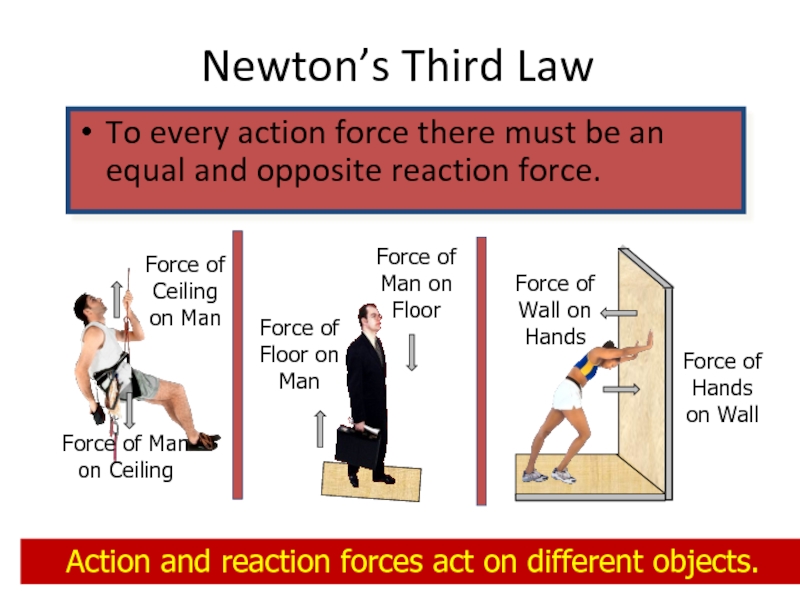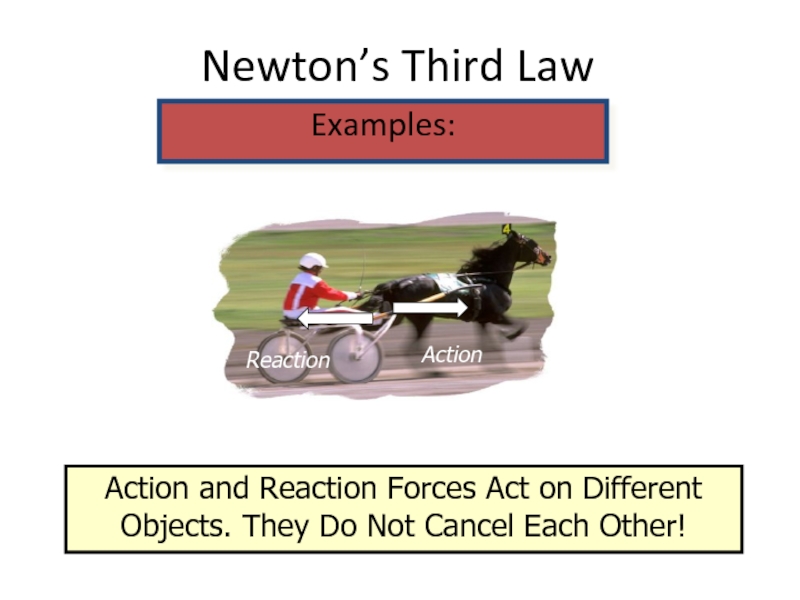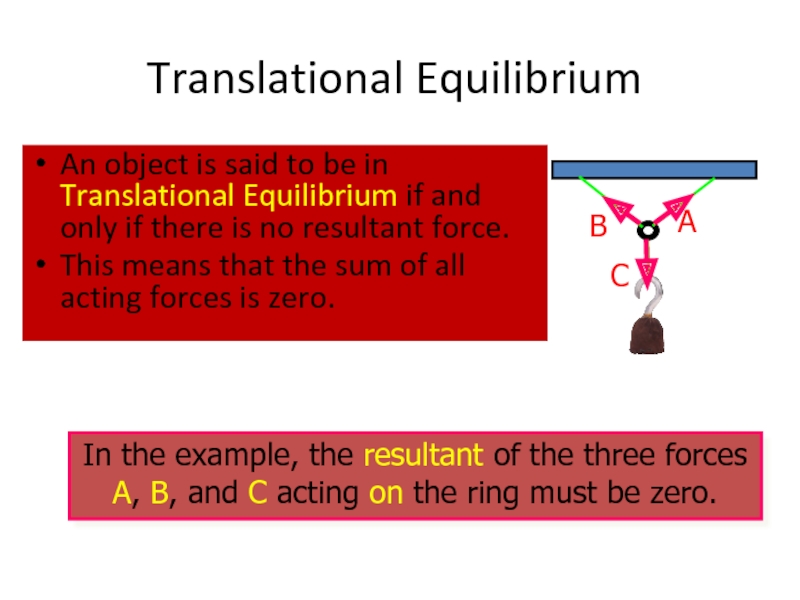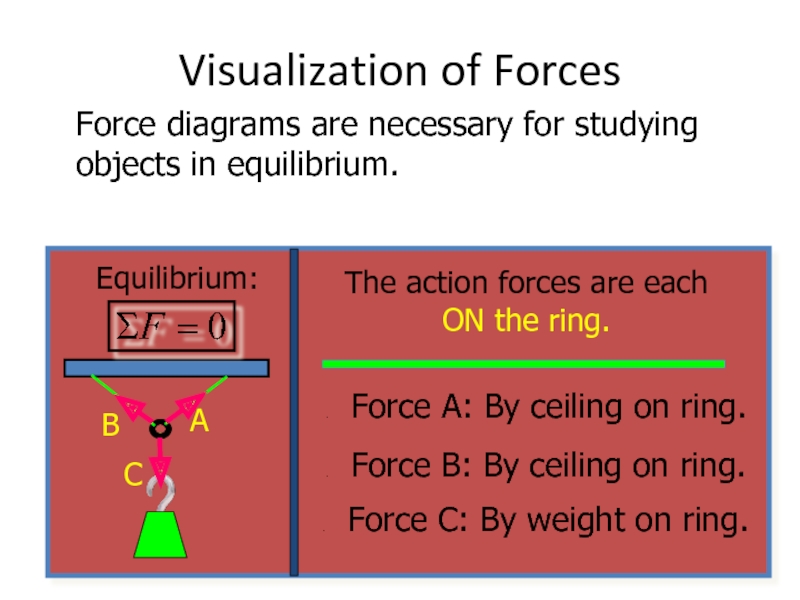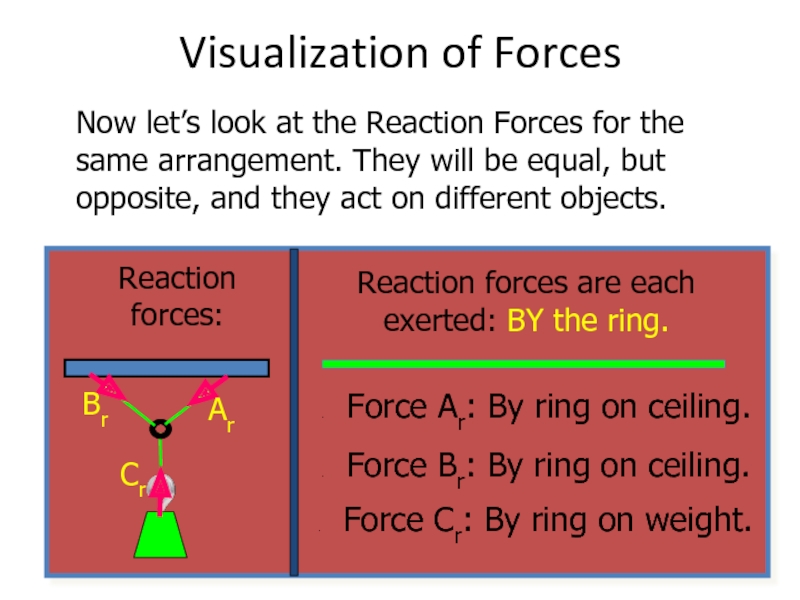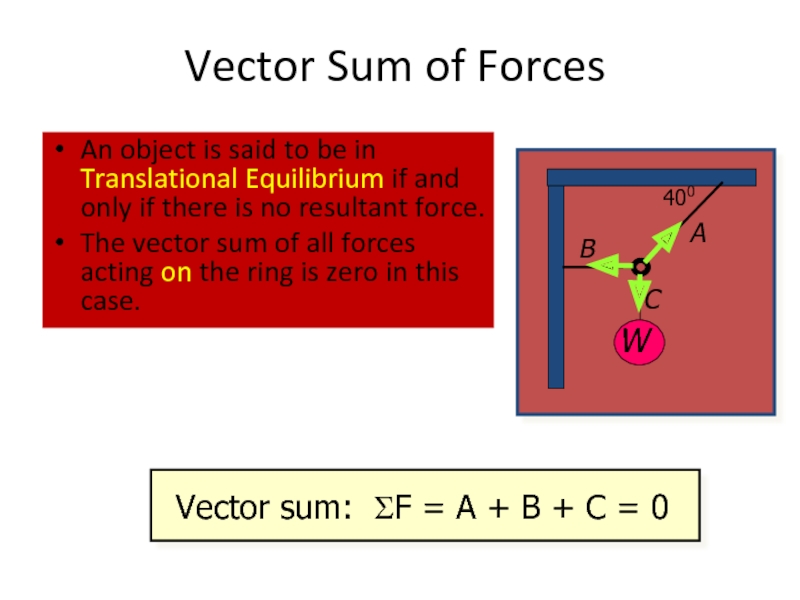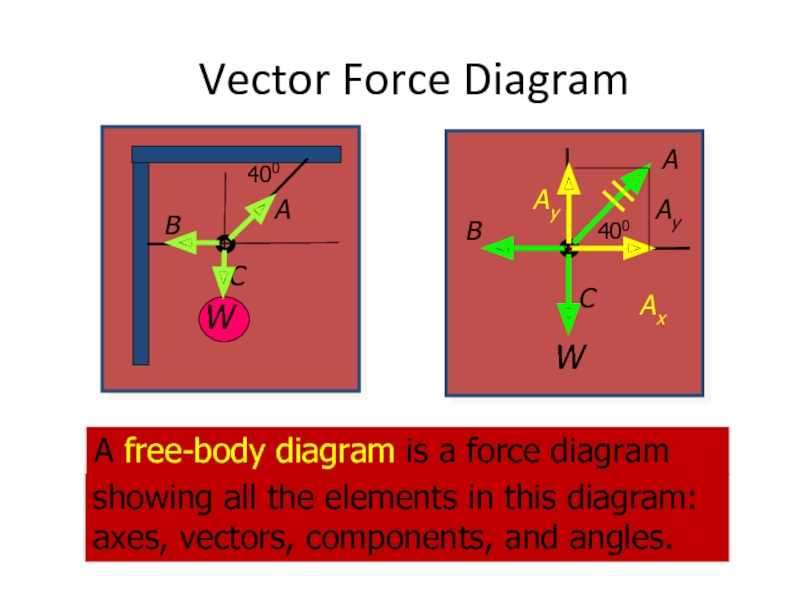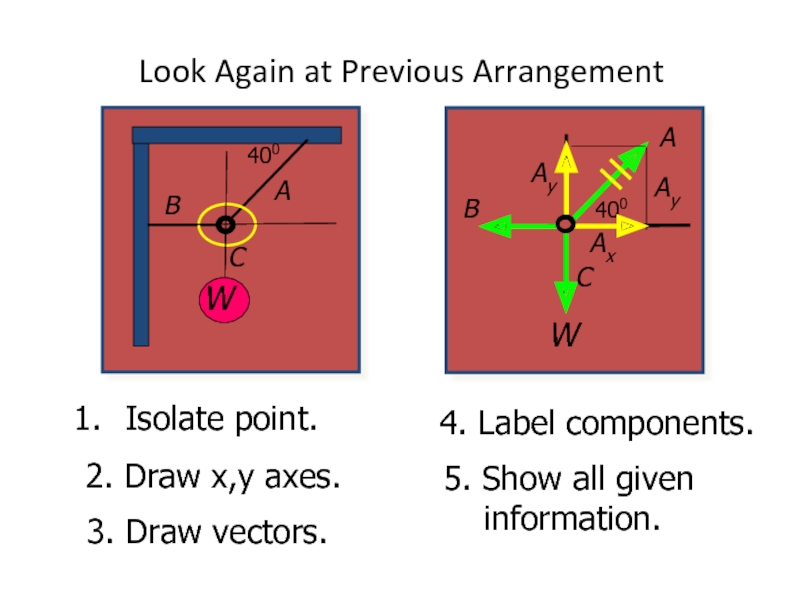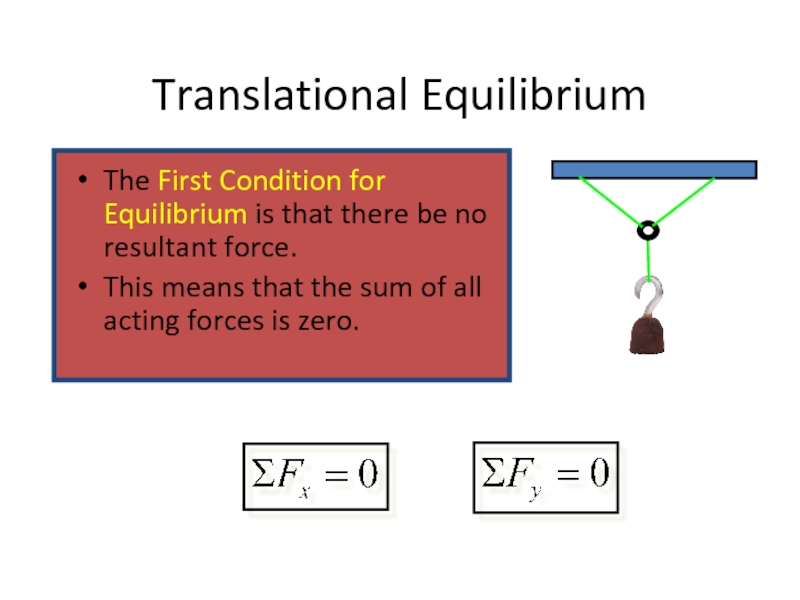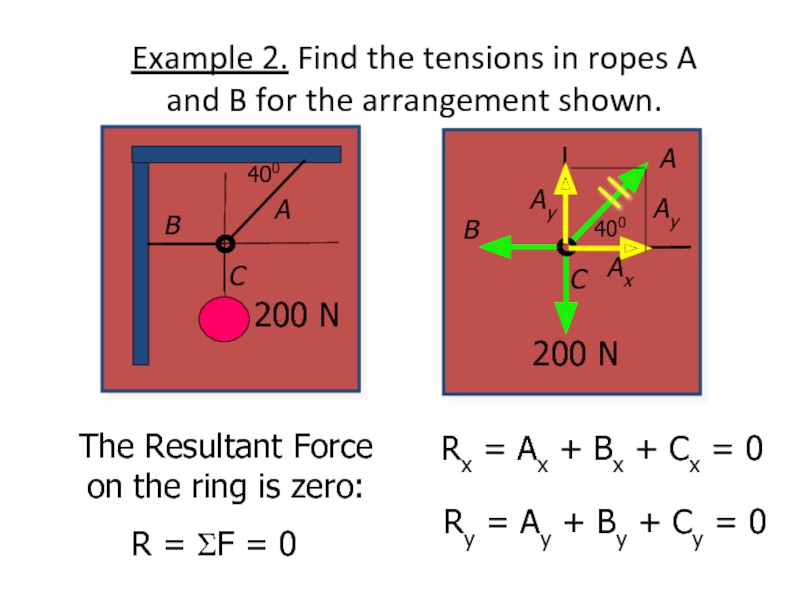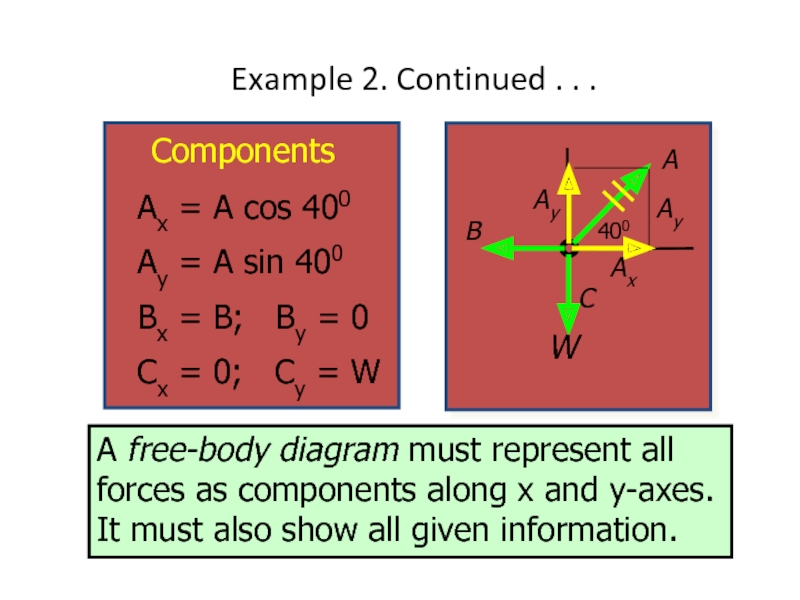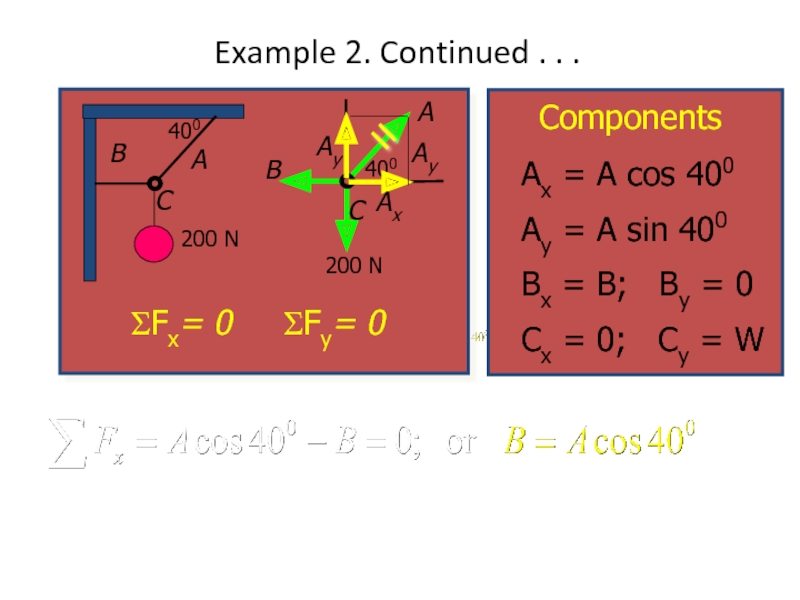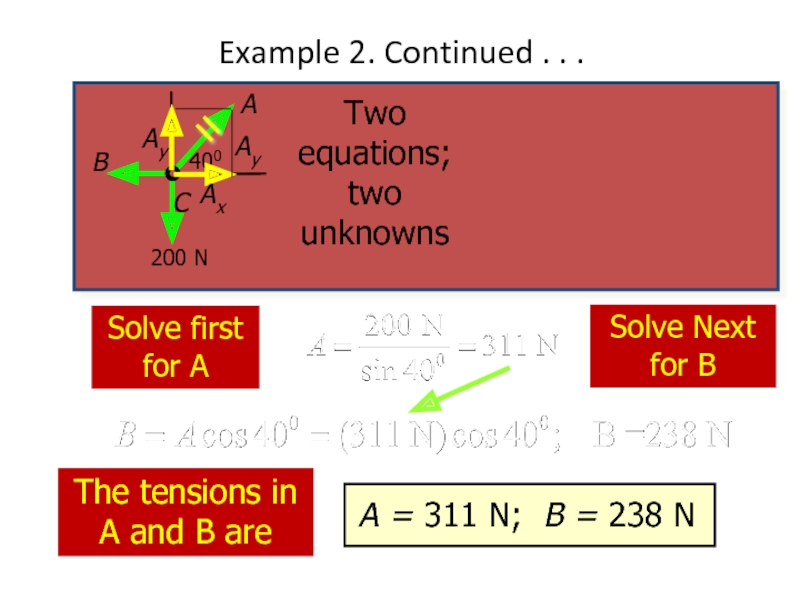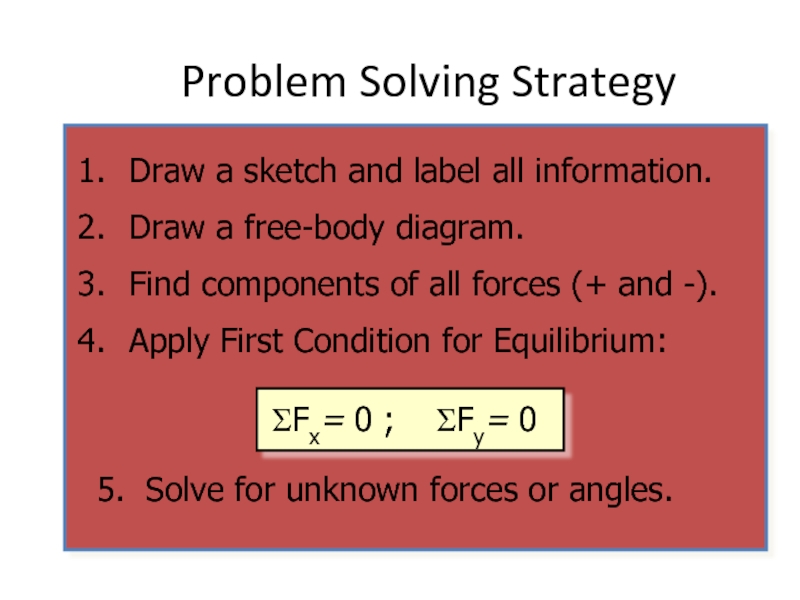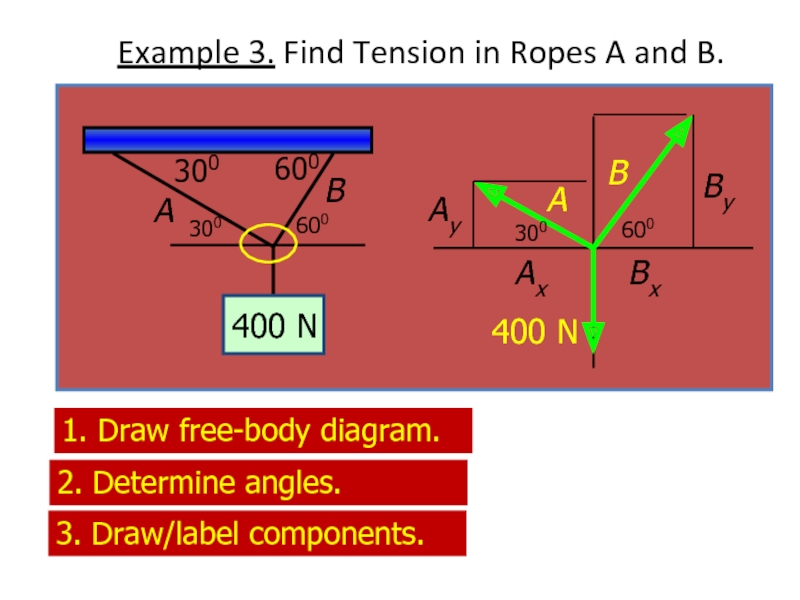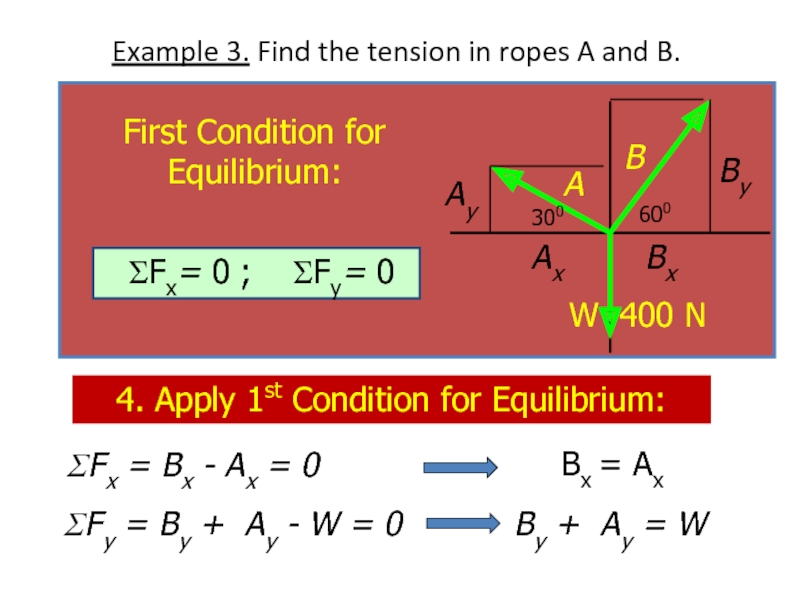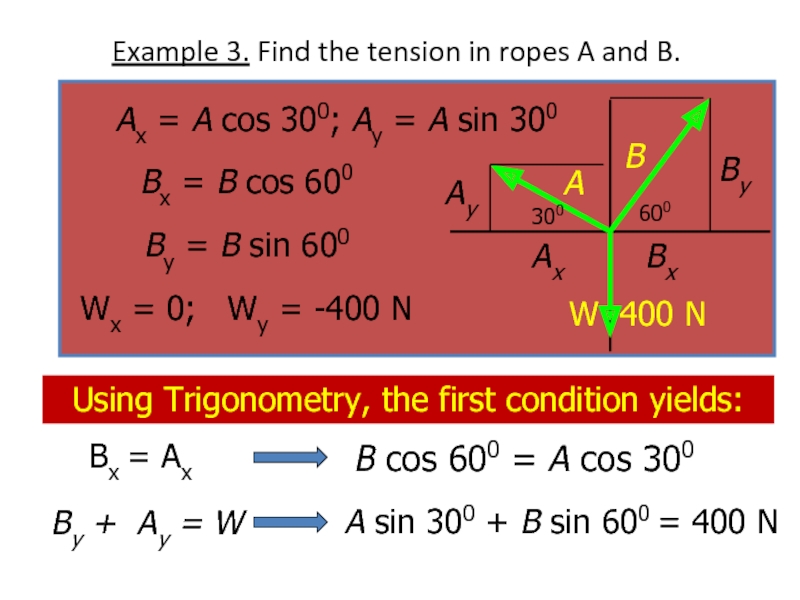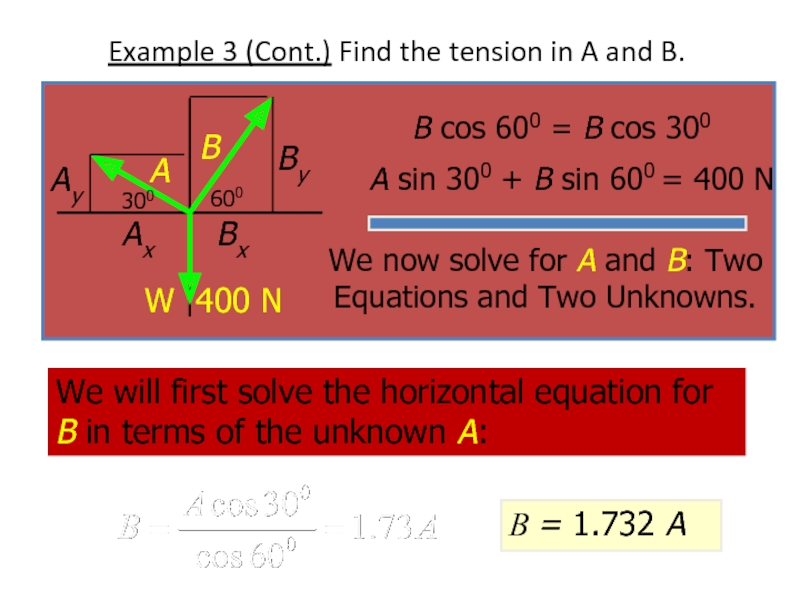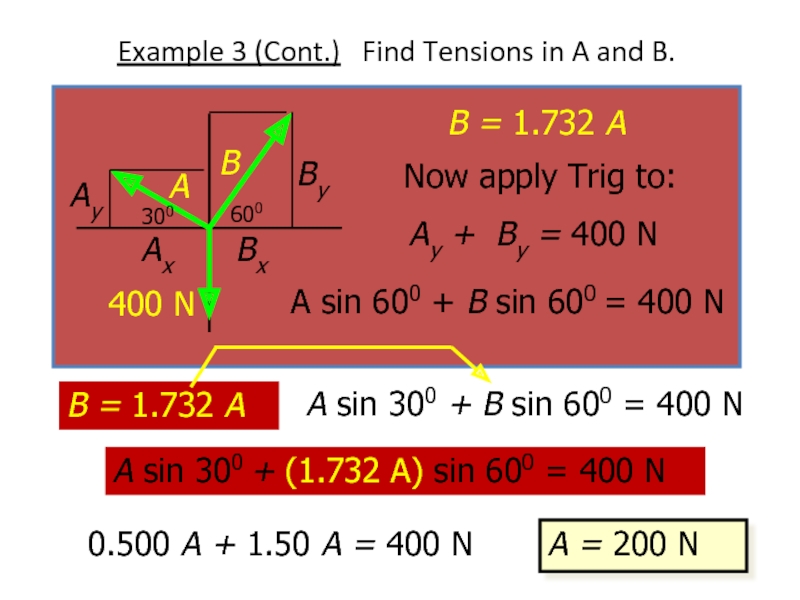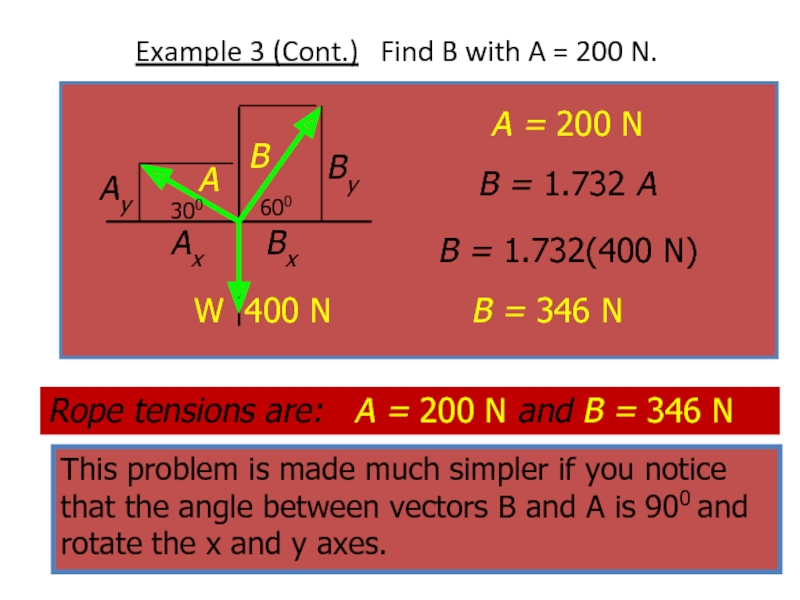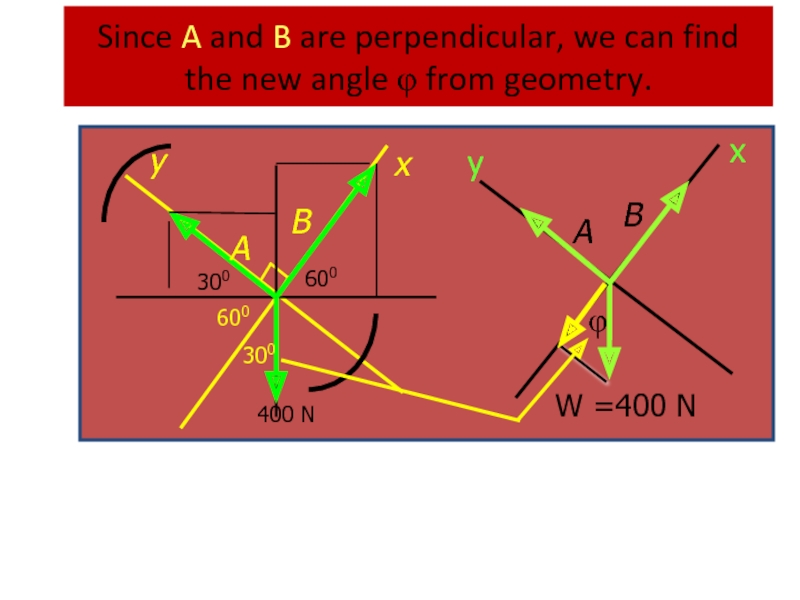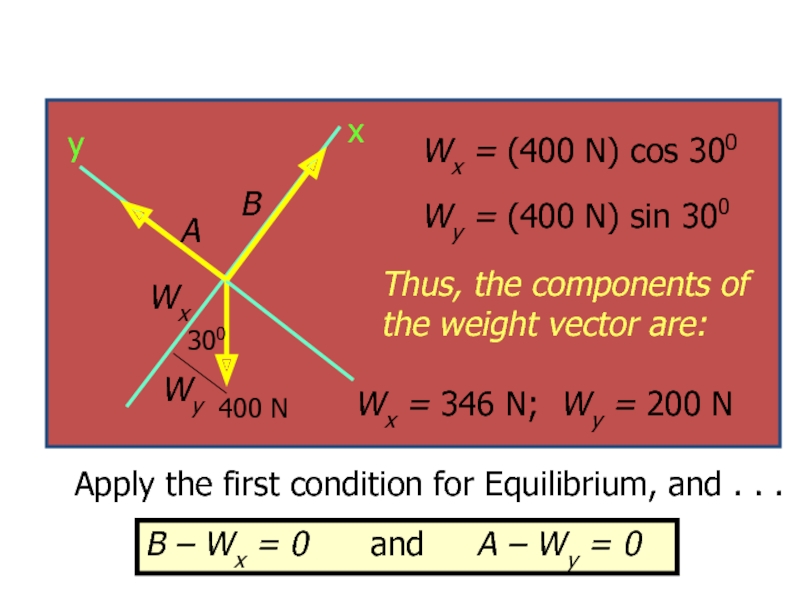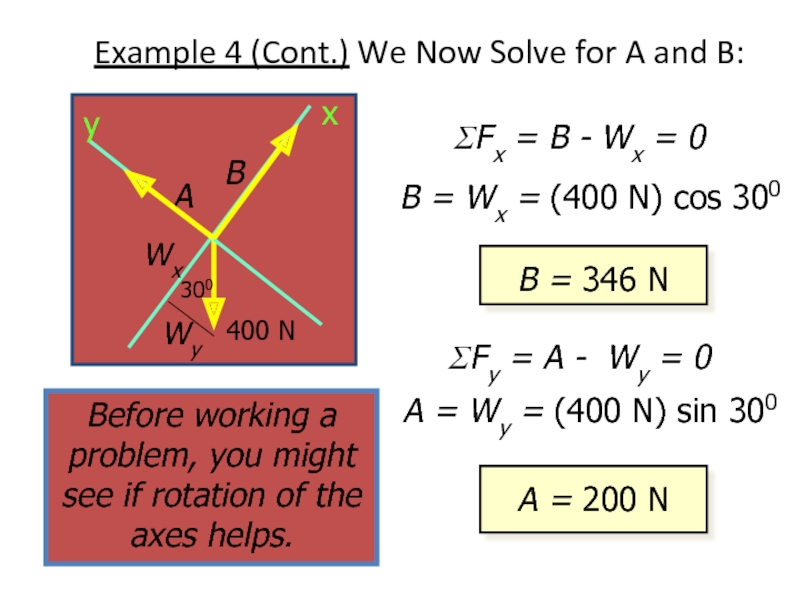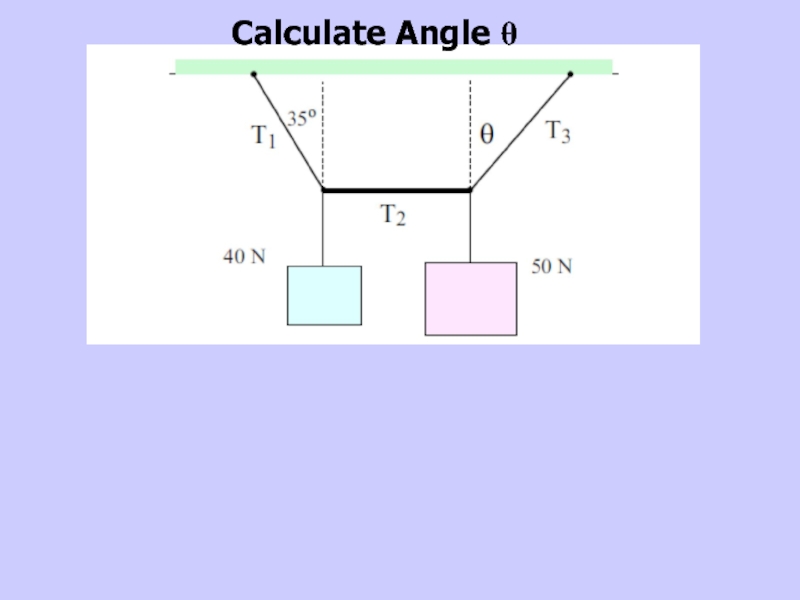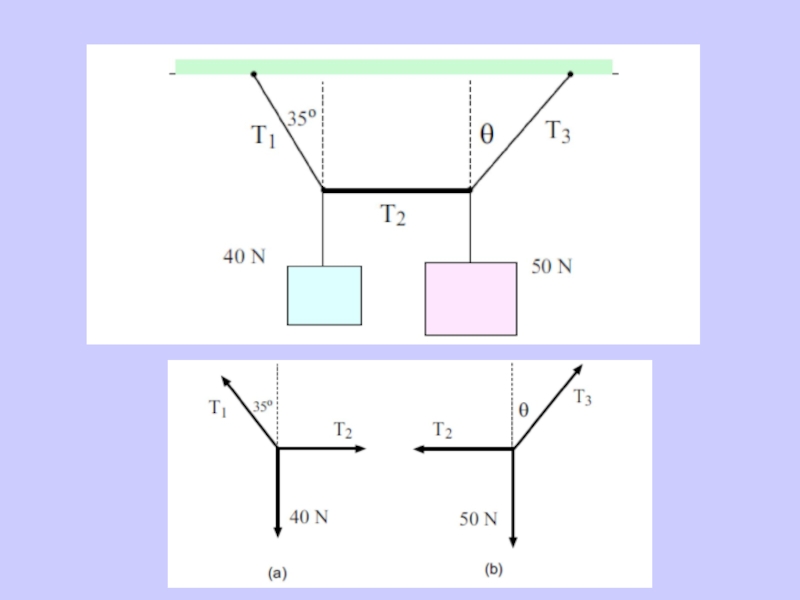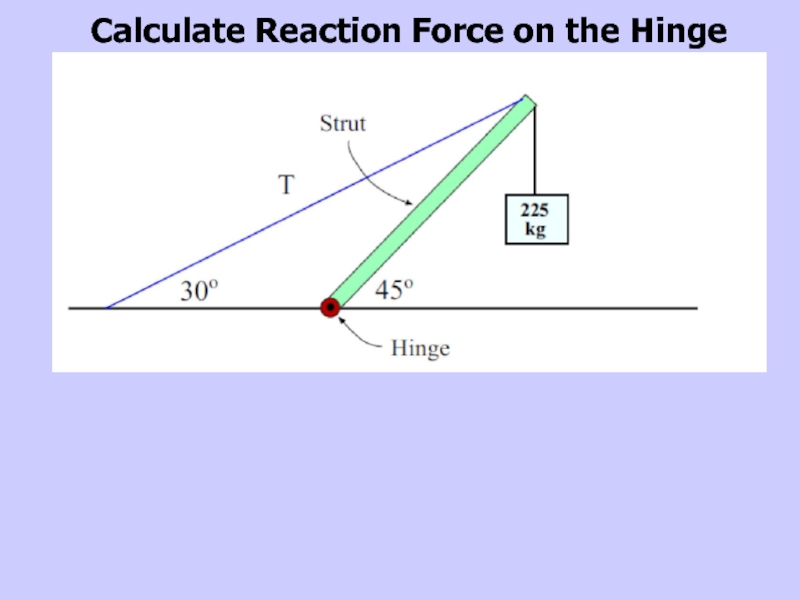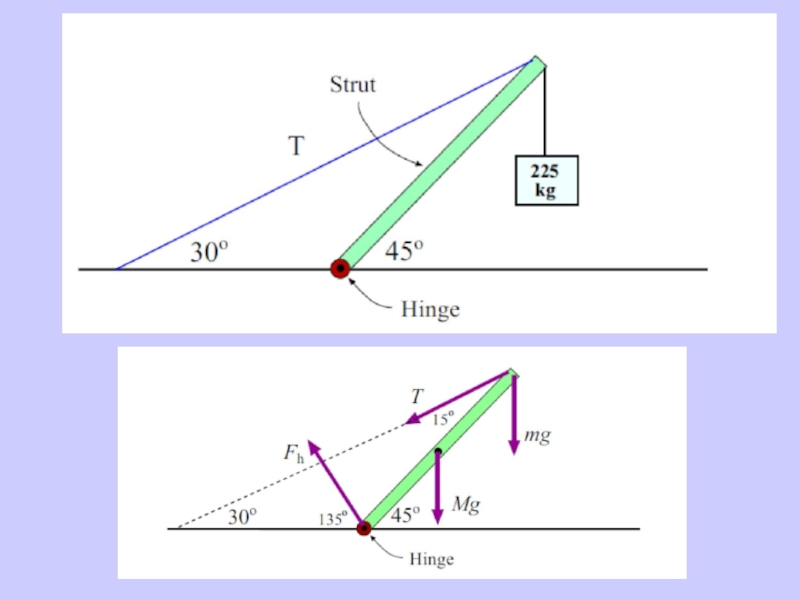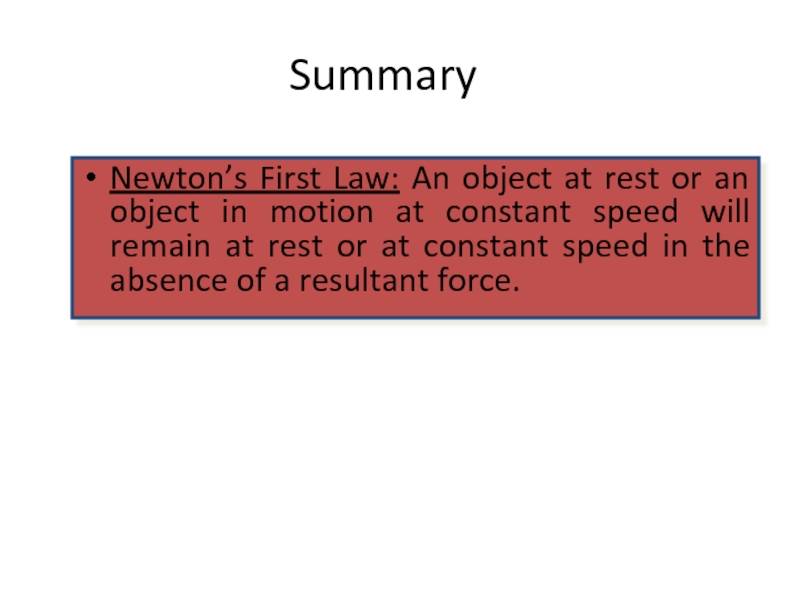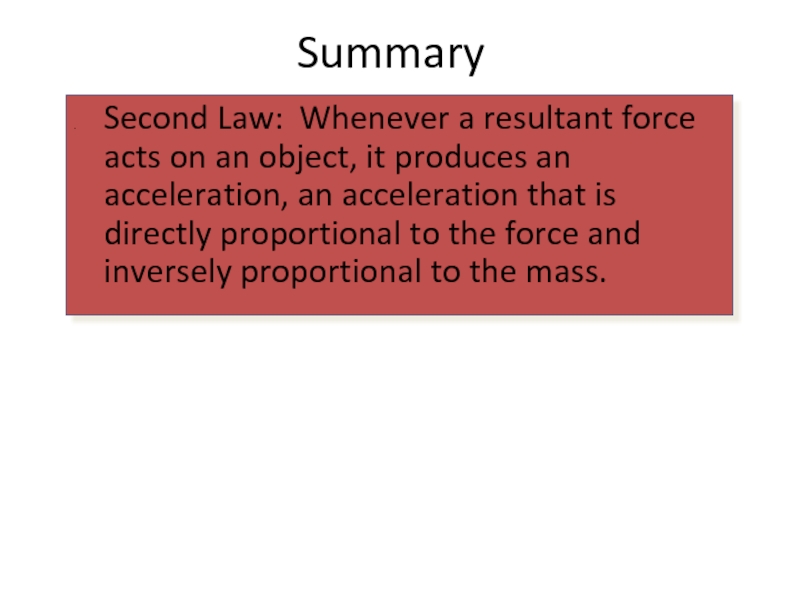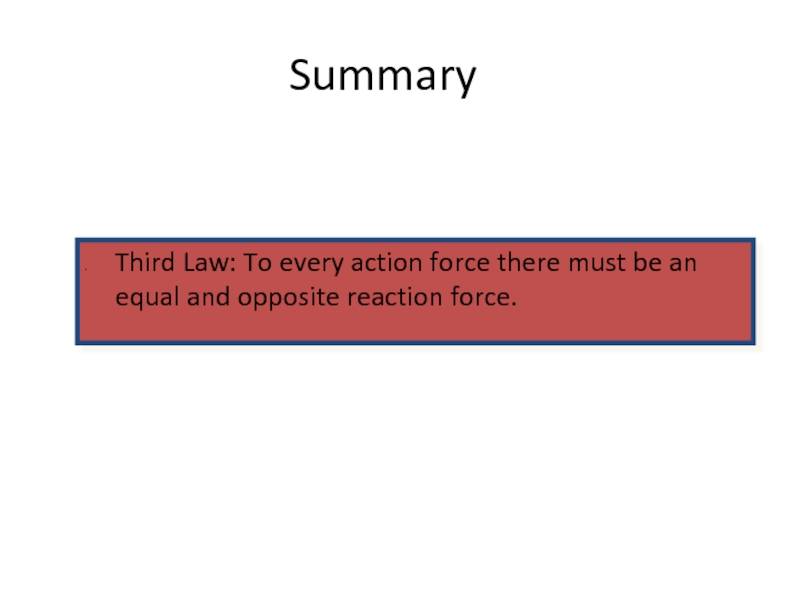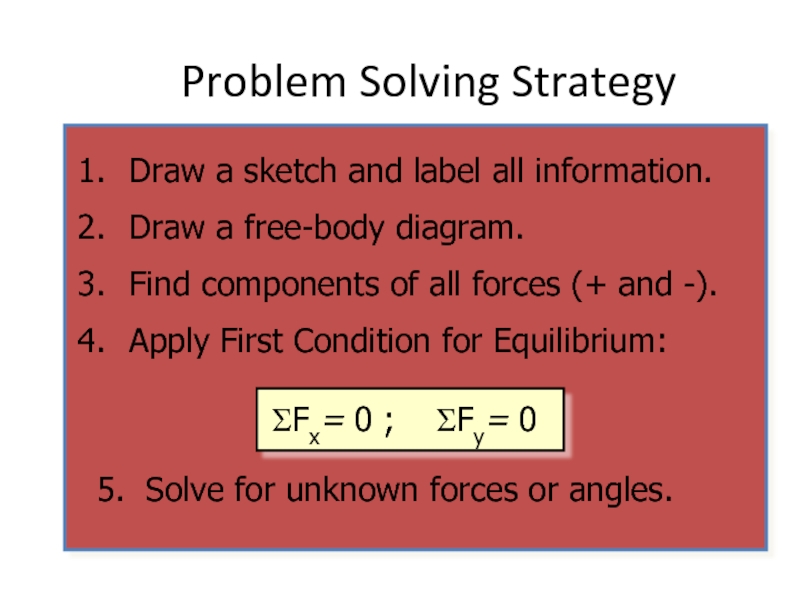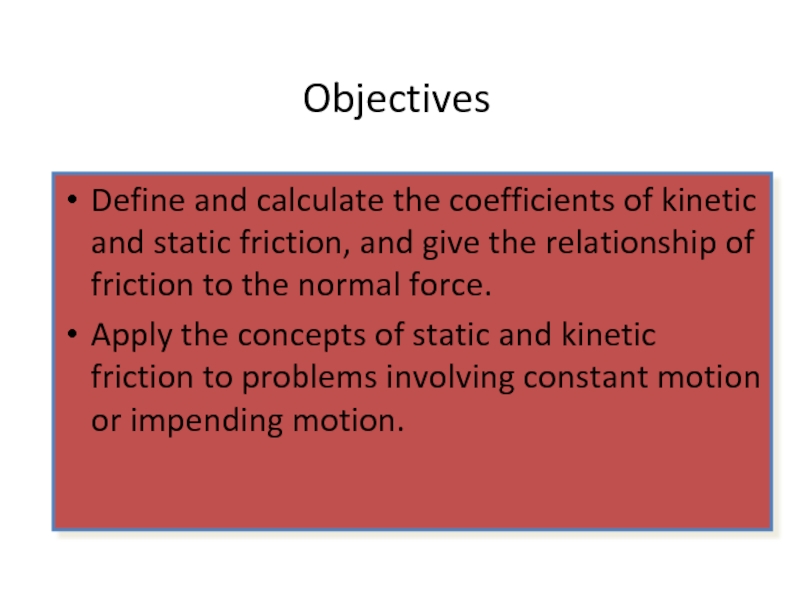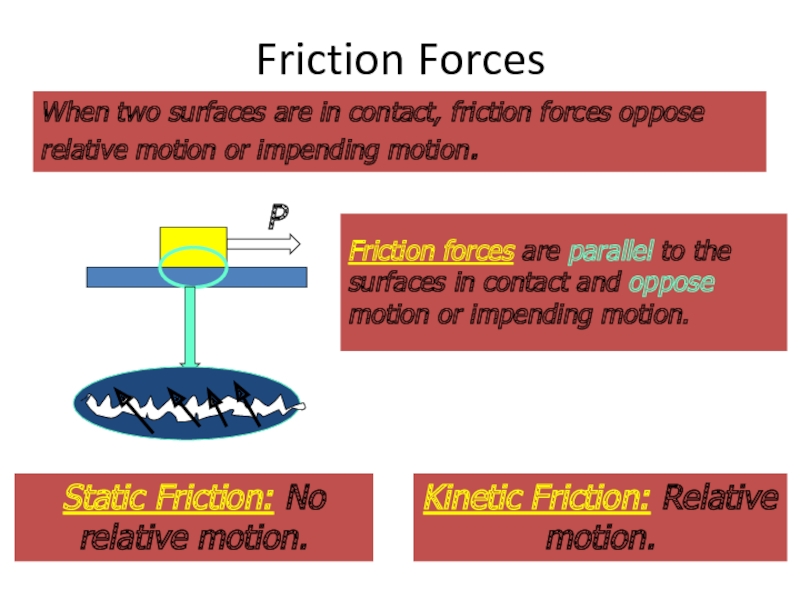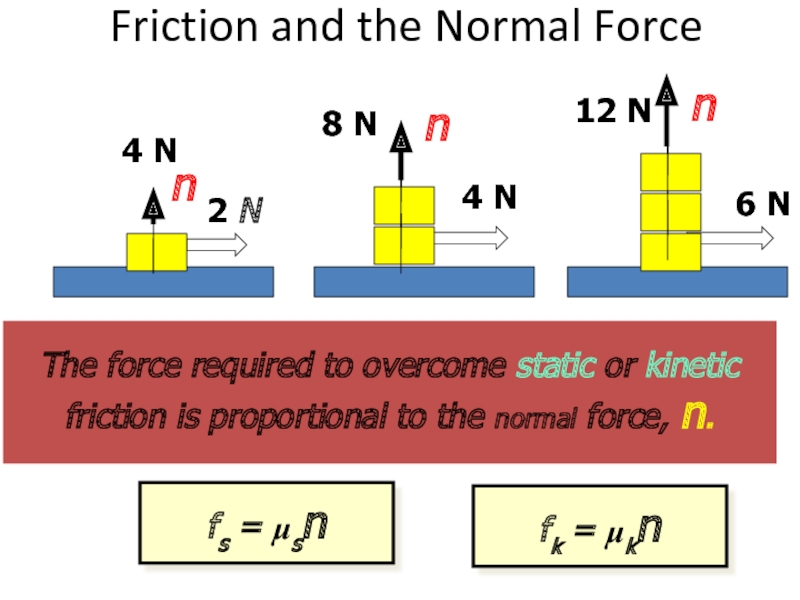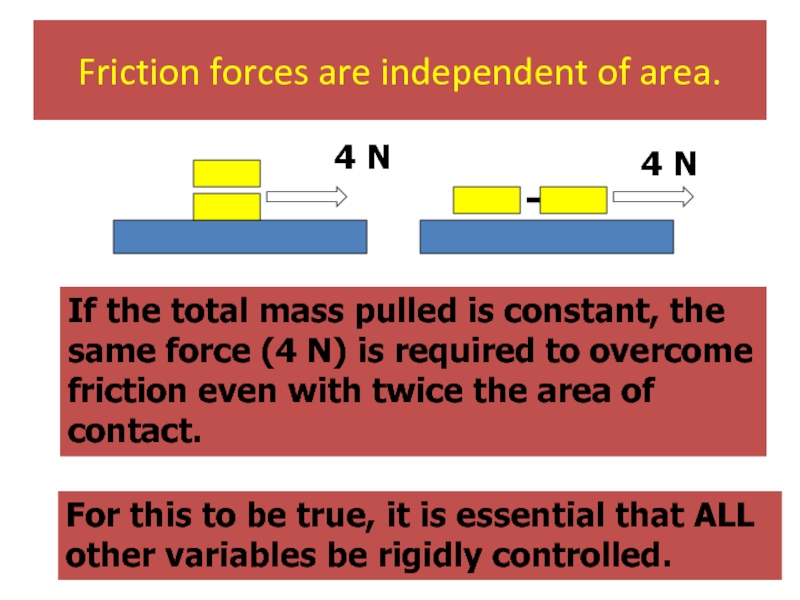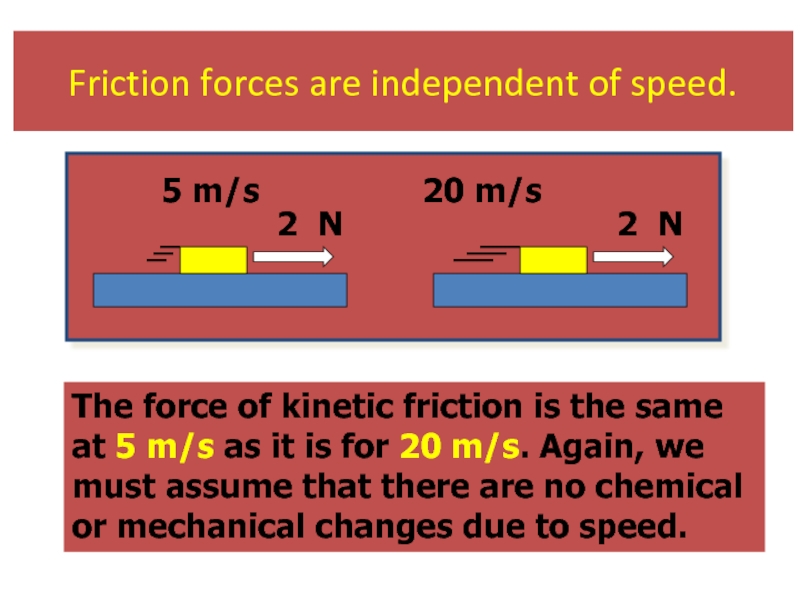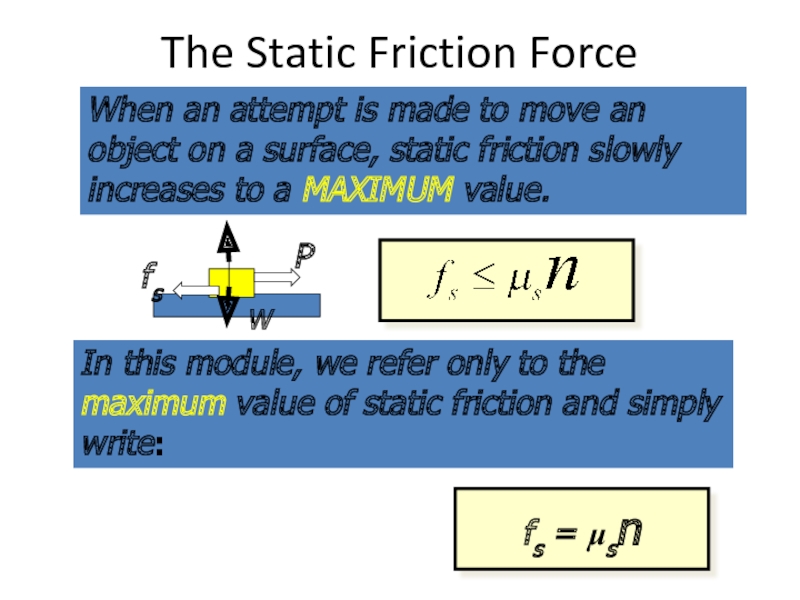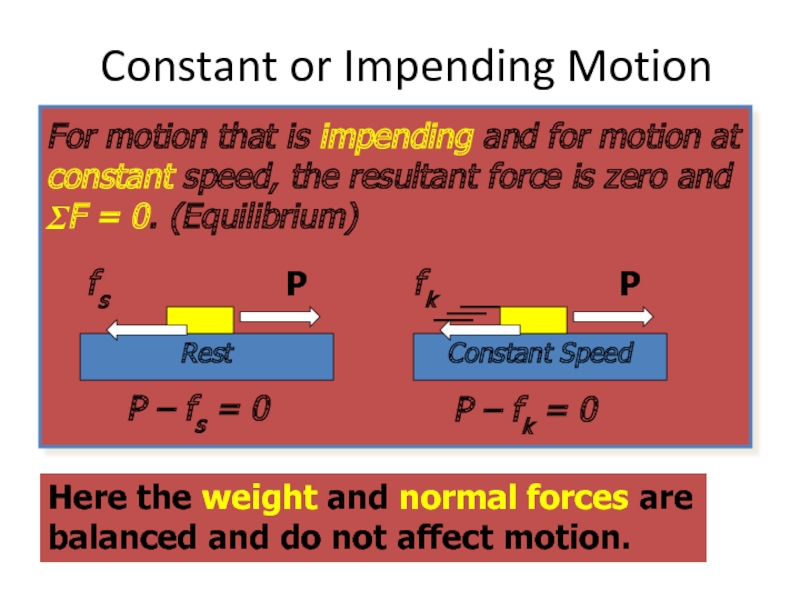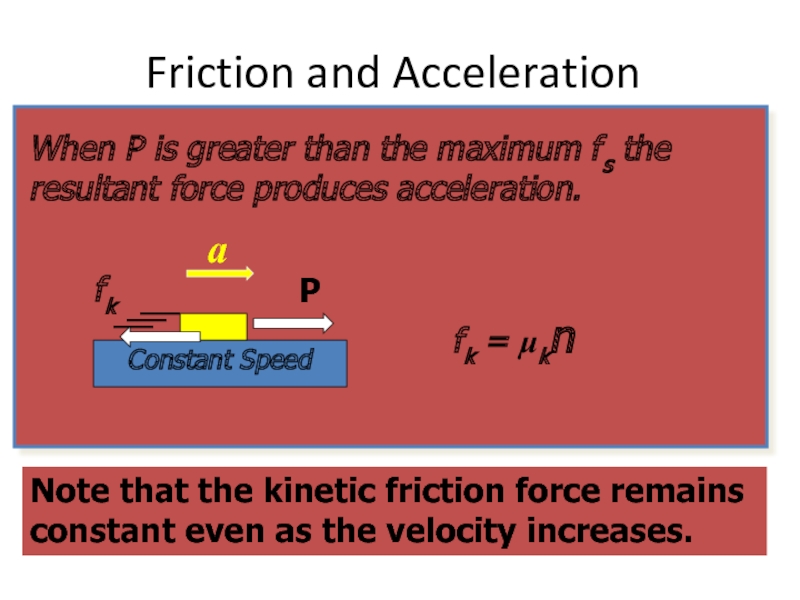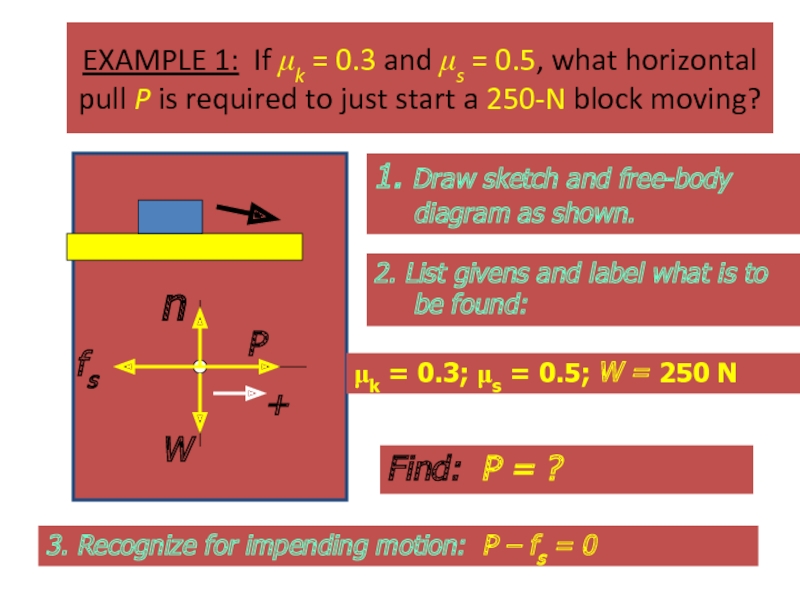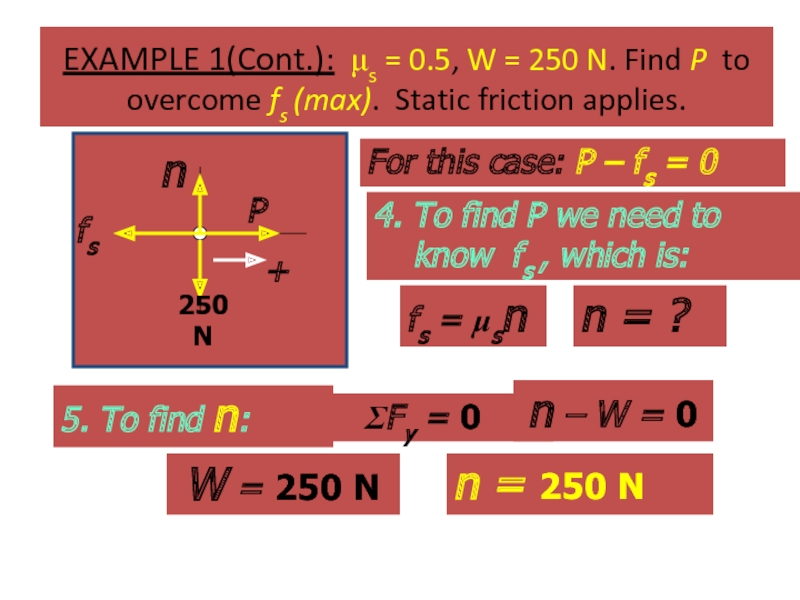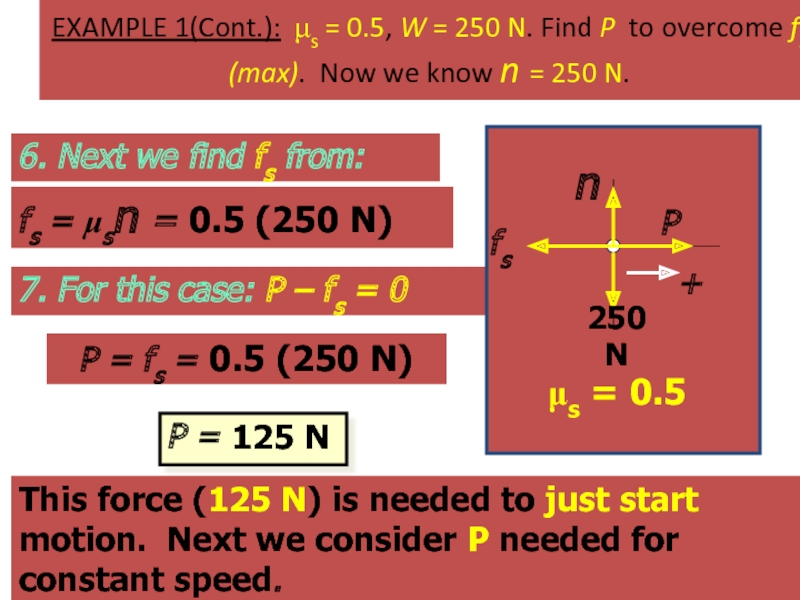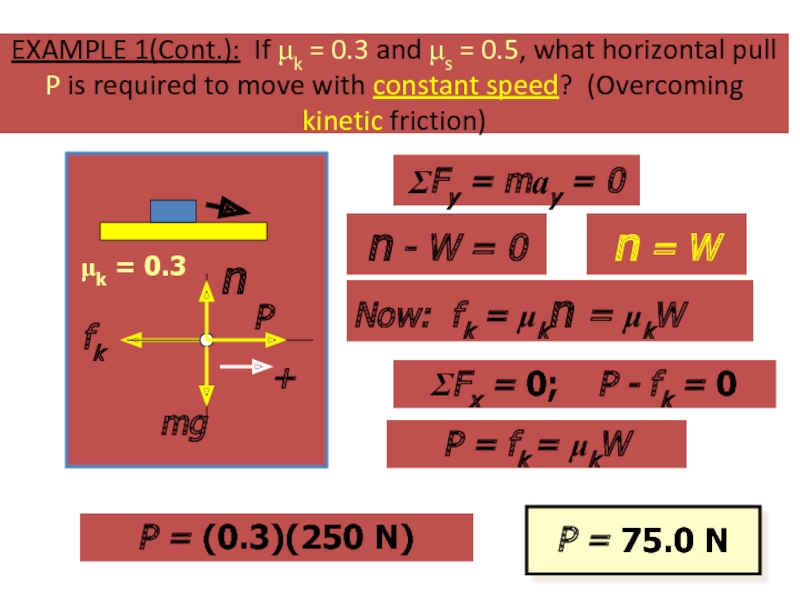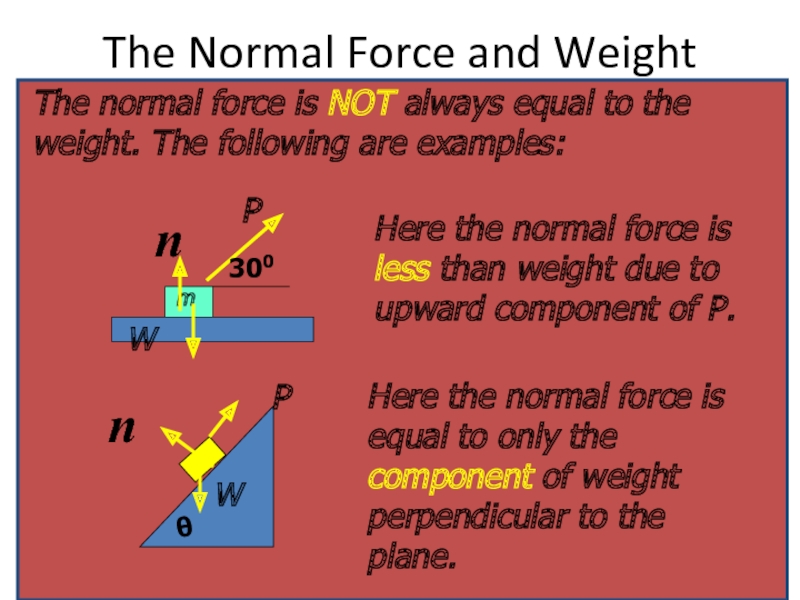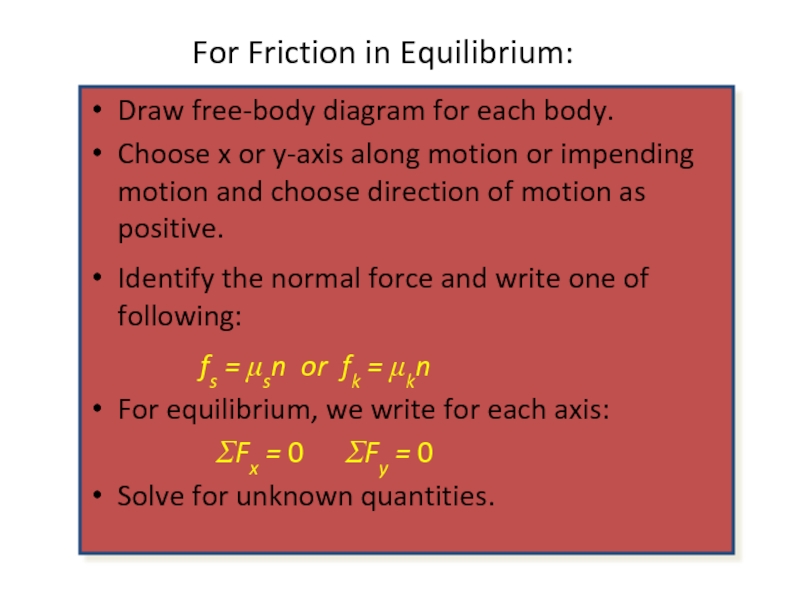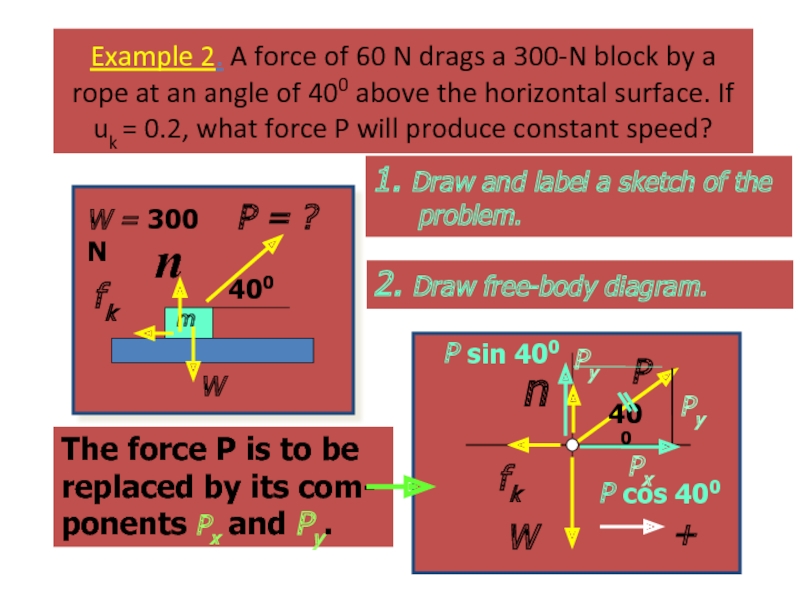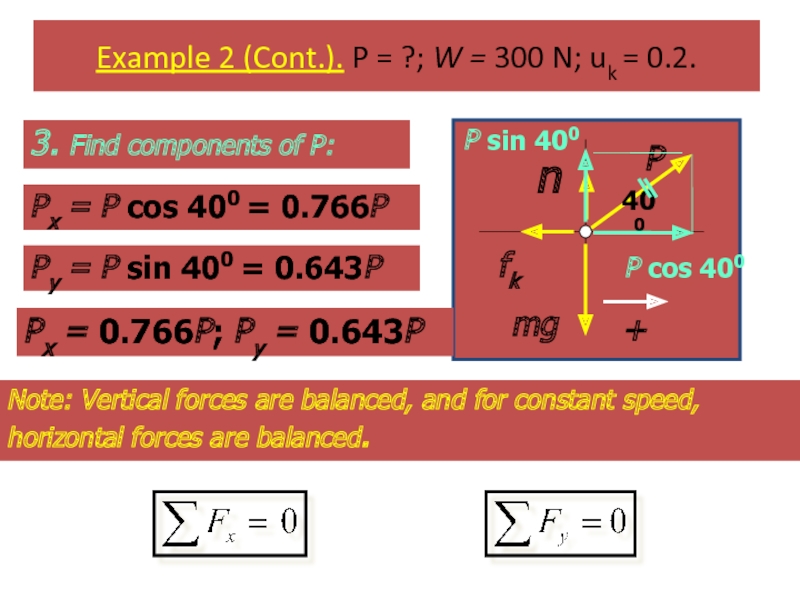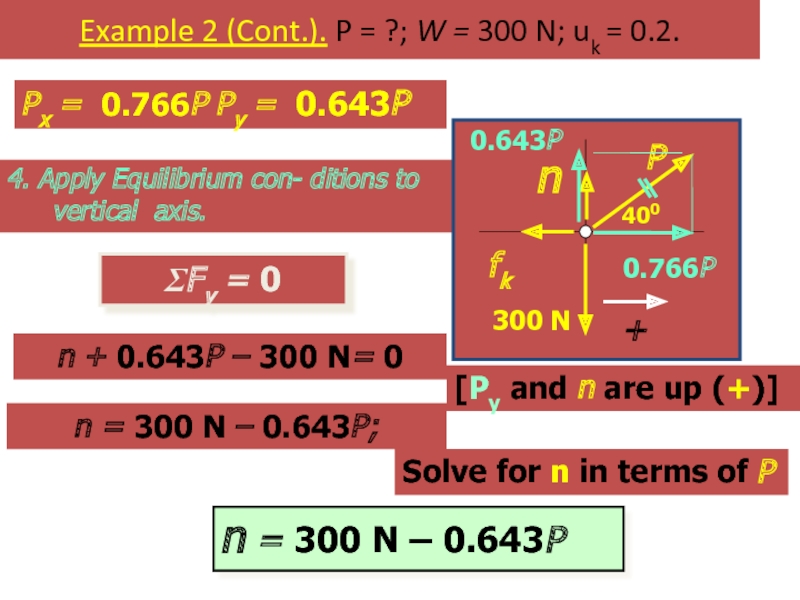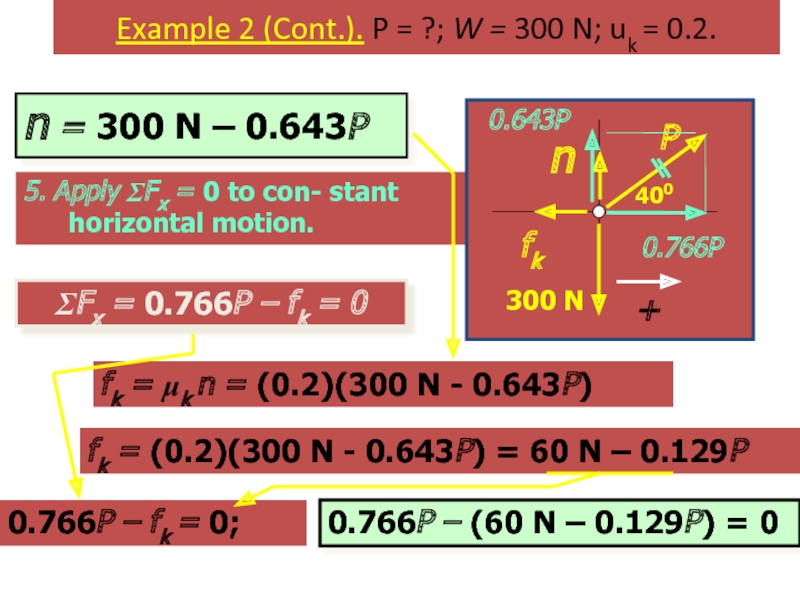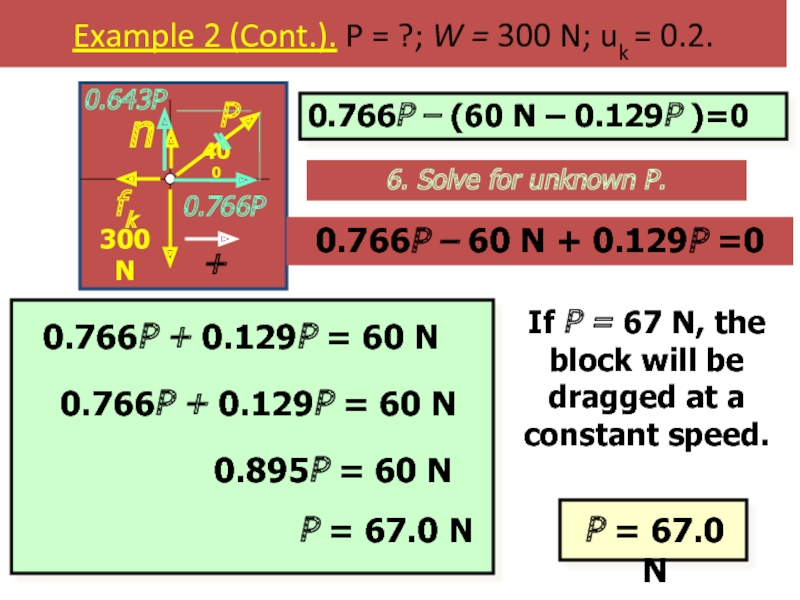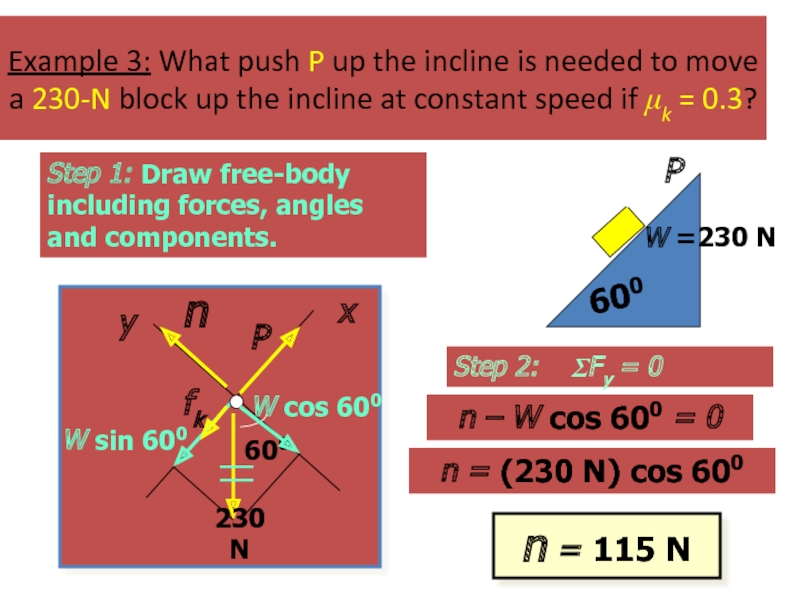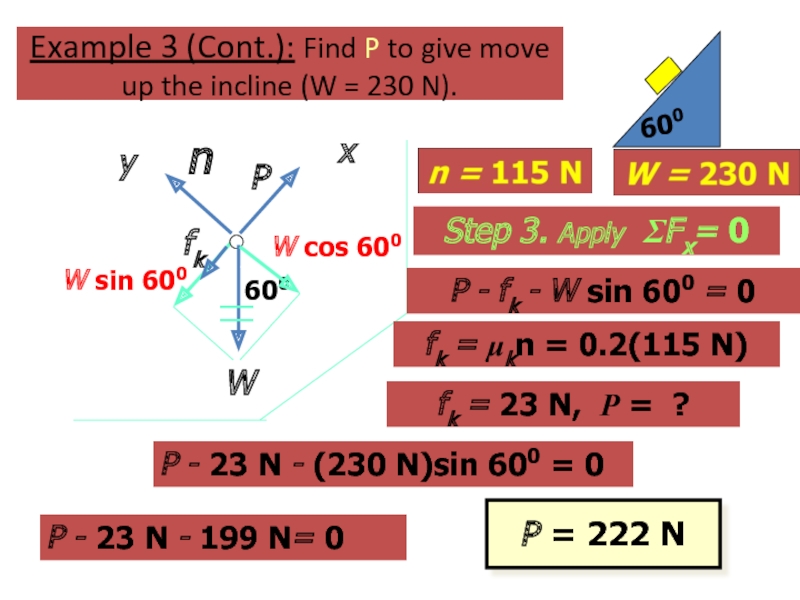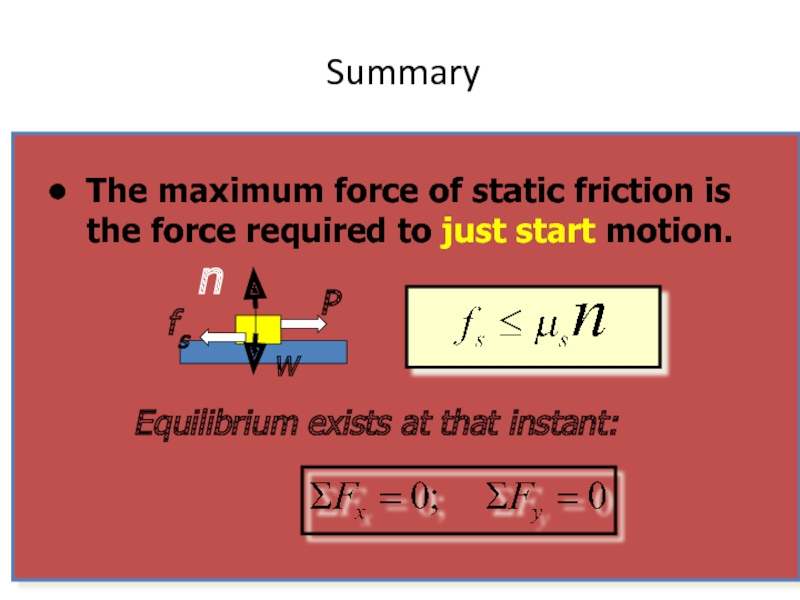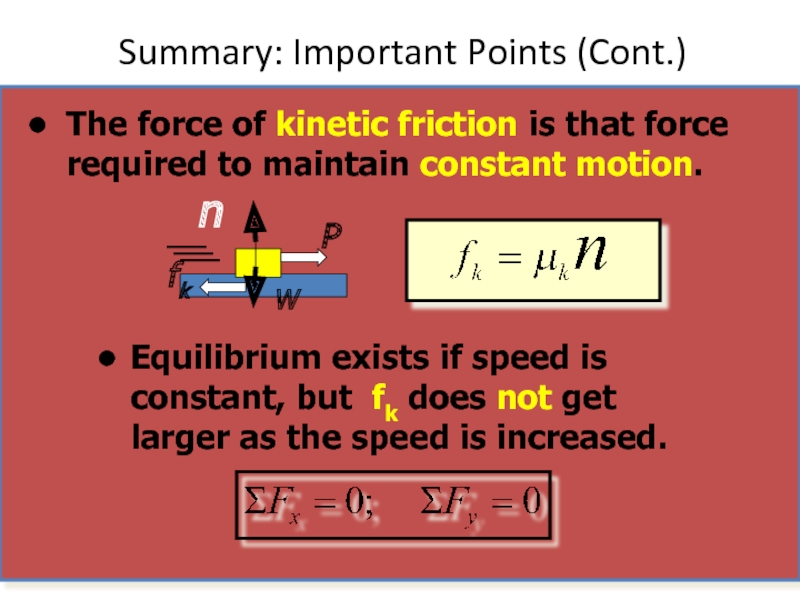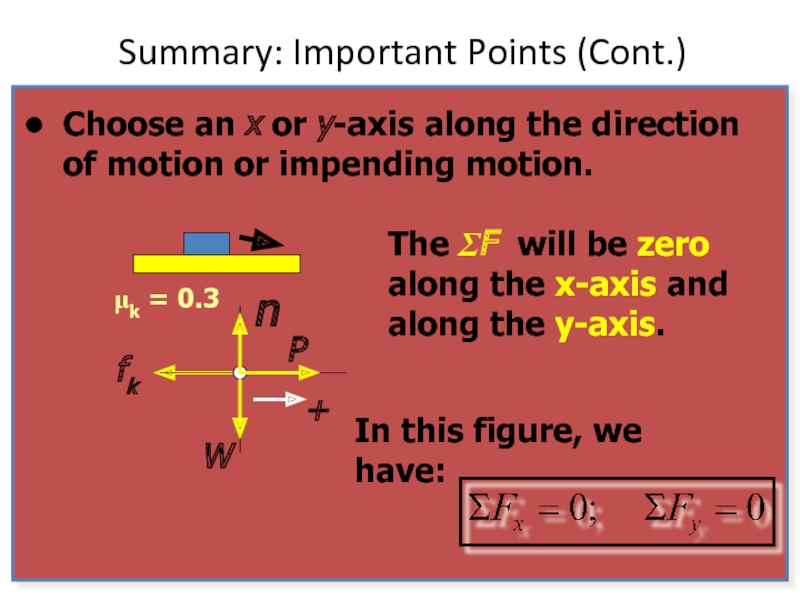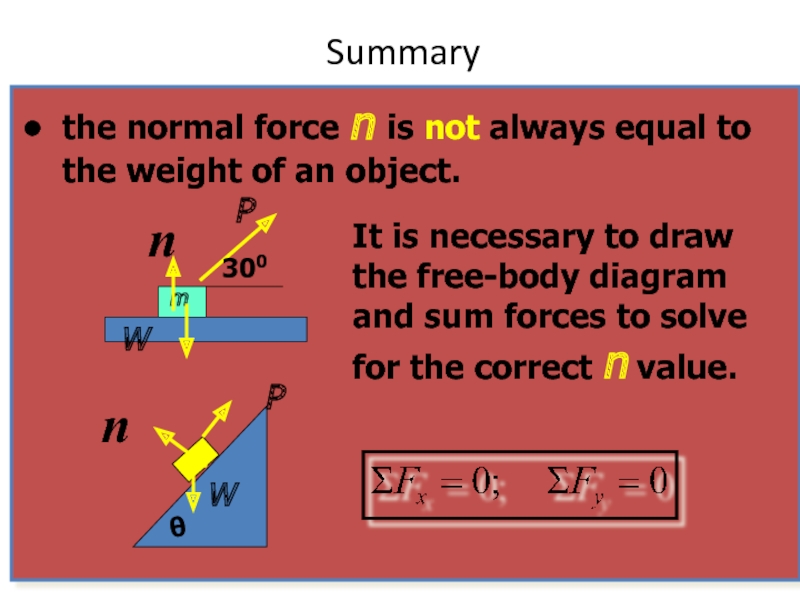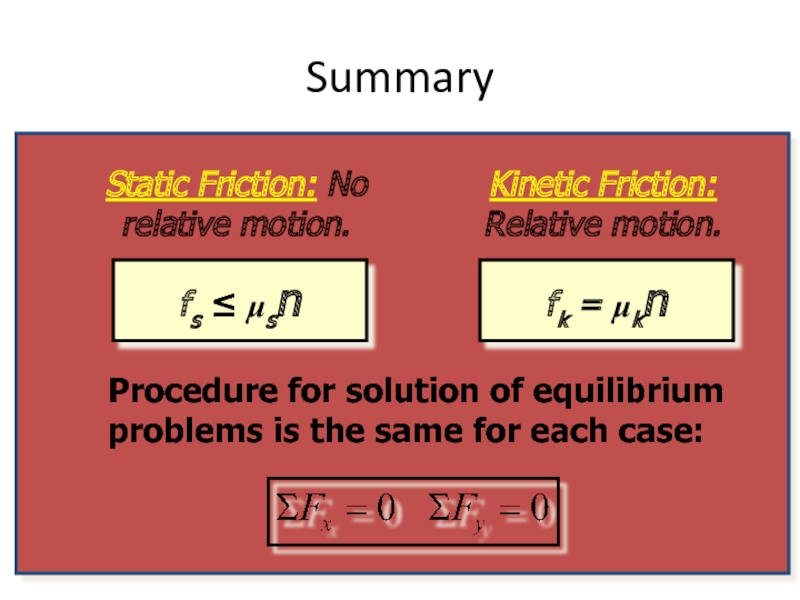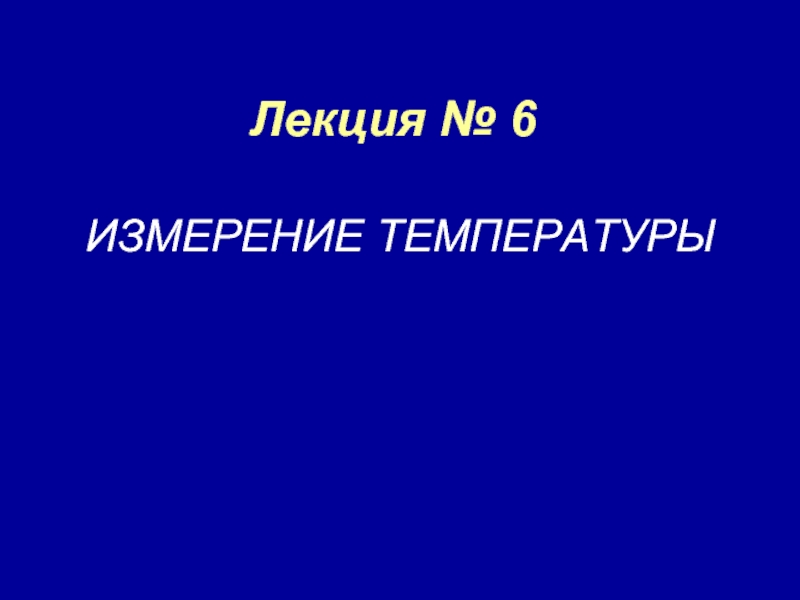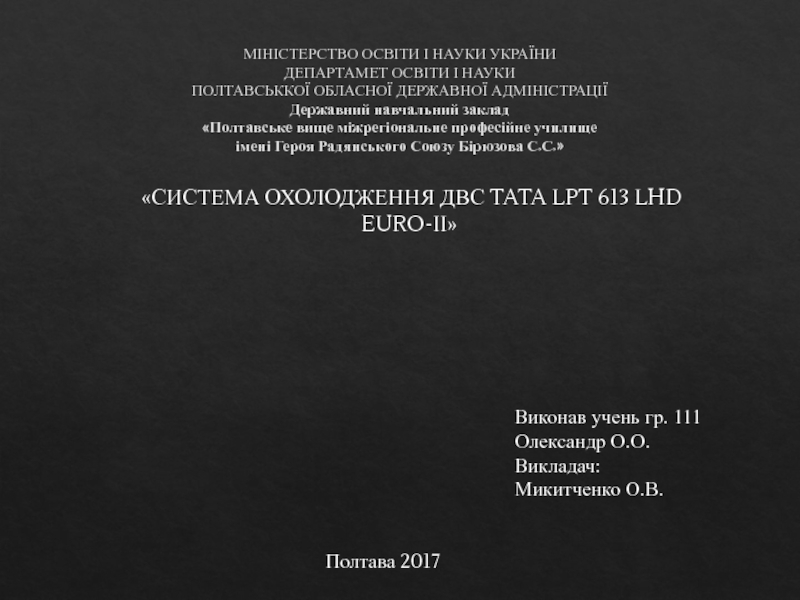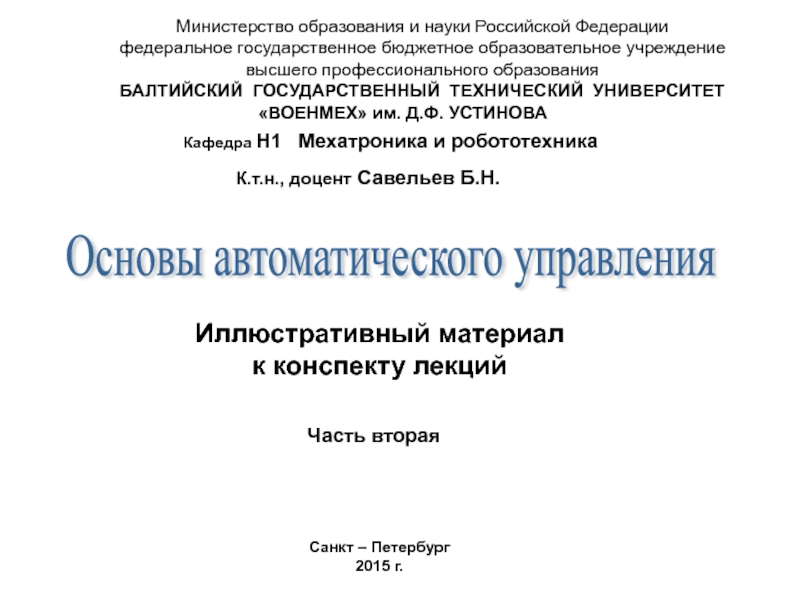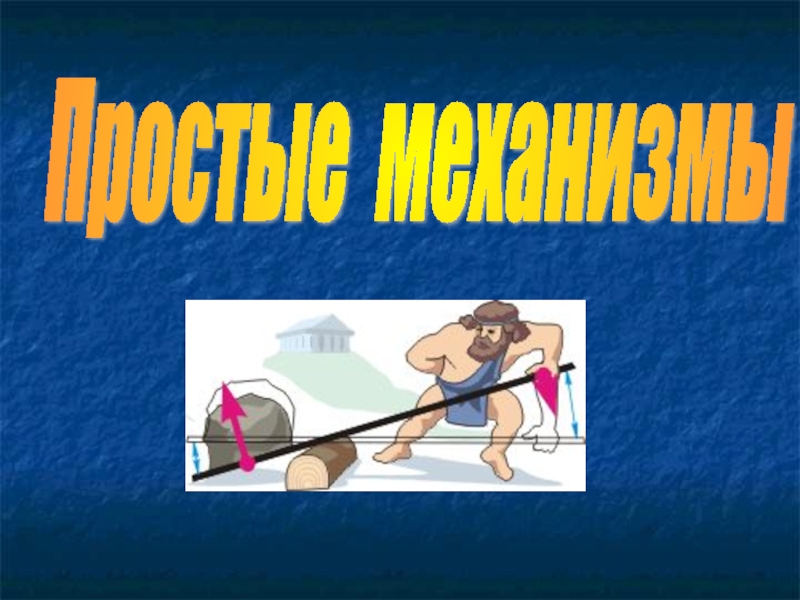- Главная
- Разное
- Дизайн
- Бизнес и предпринимательство
- Аналитика
- Образование
- Развлечения
- Красота и здоровье
- Финансы
- Государство
- Путешествия
- Спорт
- Недвижимость
- Армия
- Графика
- Культурология
- Еда и кулинария
- Лингвистика
- Английский язык
- Астрономия
- Алгебра
- Биология
- География
- Детские презентации
- Информатика
- История
- Литература
- Маркетинг
- Математика
- Медицина
- Менеджмент
- Музыка
- МХК
- Немецкий язык
- ОБЖ
- Обществознание
- Окружающий мир
- Педагогика
- Русский язык
- Технология
- Физика
- Философия
- Химия
- Шаблоны, картинки для презентаций
- Экология
- Экономика
- Юриспруденция
Tranlational equilibrium презентация
Содержание
- 1. Tranlational equilibrium
- 2. Objectives Describe with examples Newton’s three
- 3. Newton’s First Law Newton’s First Law: An
- 4. Newton’s Second Law: Second Law: Whenever a
- 5. Newton’s Third Law To every action force
- 6. Newton’s Third Law Examples: Action and Reaction
- 7. Translational Equilibrium An object is said to
- 8. Visualization of Forces Force diagrams are necessary
- 9. Visualization of Forces Now let’s look at
- 10. Vector Sum of Forces An object is
- 11. Vector Force Diagram W 400
- 12. Look Again at Previous Arrangement Isolate
- 13. Translational Equilibrium The First Condition for
- 14. Example 2. Find the tensions in ropes
- 15. Example 2. Continued . . .
- 16. Example 2. Continued . . . ΣFx= 0 ΣFy= 0
- 17. Example 2. Continued . . . Solve
- 18. Problem Solving Strategy Draw a sketch
- 19. Example 3. Find Tension in Ropes A
- 20. Example 3. Find the tension in ropes
- 21. Example 3. Find the tension in ropes
- 22. Example 3 (Cont.) Find the tension in
- 23. Example 3 (Cont.) Find Tensions in
- 24. Example 3 (Cont.) Find B
- 25. Example 4. Rotate axes for same example.
- 26. Since A and B are perpendicular, we
- 27. Apply the first condition for Equilibrium, and
- 28. Example 4 (Cont.) We Now Solve for
- 29. Calculate Angle θ
- 31. Calculate Reaction Force on the Hinge
- 33. Summary Newton’s First Law: An object at
- 34. Summary Second Law: Whenever a resultant force
- 35. Summary Third Law: To every action force
- 36. Problem Solving Strategy Draw a
- 37. Friction and Equilibrium
- 38. Objectives Define and calculate the coefficients of
- 39. Friction Forces When two surfaces are in
- 40. Friction and the Normal Force The force
- 41. Friction forces are independent of area. If
- 42. Friction forces are independent of speed.
- 43. The Static Friction Force
- 44. Constant or Impending Motion Here the weight
- 45. Friction and Acceleration Note that the kinetic
- 46. EXAMPLE 1: If μk = 0.3 and
- 47. EXAMPLE 1(Cont.): μs = 0.5, W =
- 48. EXAMPLE 1(Cont.): μs = 0.5, W =
- 49. EXAMPLE 1(Cont.): If μk = 0.3 and
- 50. The Normal Force and Weight
- 51. For Friction in Equilibrium: Draw free-body diagram
- 52. m Example 2. A
- 53. Example 2 (Cont.). P = ?; W
- 54. Example 2 (Cont.). P = ?; W
- 55. Example 2 (Cont.). P = ?; W
- 56. Example 2 (Cont.). P = ?; W
- 57. Example 3: What push P up
- 58. Example 3 (Cont.): Find P to give
- 59. Summary Equilibrium exists at that instant:
- 60. Summary: Important Points (Cont.) Equilibrium exists if
- 61. Summary: Important Points (Cont.) The ΣF will
- 62. Summary It is necessary to draw the
- 63. Summary Static Friction: No relative motion.
Слайд 2
Objectives
Describe with examples Newton’s three laws of motion.
Describe with examples the
Draw free-body diagrams for objects in translational equilibrium.
Apply the first condition for equilibrium to the solution of problems.
Слайд 3Newton’s First Law
Newton’s First Law: An object at rest or an
Слайд 4Newton’s Second Law:
Second Law: Whenever a resultant force acts on an
Слайд 5Newton’s Third Law
To every action force there must be an equal
Action and reaction forces act on different objects.
Слайд 6Newton’s Third Law
Examples:
Action and Reaction Forces Act on Different Objects. They
Слайд 7Translational Equilibrium
An object is said to be in Translational Equilibrium if
This means that the sum of all acting forces is zero.
In the example, the resultant of the three forces A, B, and C acting on the ring must be zero.
Слайд 8Visualization of Forces
Force diagrams are necessary for studying objects in equilibrium.
The action forces are each ON the ring.
Force A: By ceiling on ring.
Force B: By ceiling on ring.
Force C: By weight on ring.
Слайд 9Visualization of Forces
Now let’s look at the Reaction Forces for the
Reaction forces:
Reaction forces are each exerted: BY the ring.
Force Ar: By ring on ceiling.
Force Br: By ring on ceiling.
Force Cr: By ring on weight.
Слайд 10Vector Sum of Forces
An object is said to be in Translational
The vector sum of all forces acting on the ring is zero in this case.
Слайд 11
Vector Force Diagram
W
400
A
B
C
Ax
Ay
A free-body diagram is a force diagram
Ay
showing all the
Слайд 12
Look Again at Previous Arrangement
Isolate point.
2. Draw x,y axes.
3. Draw vectors.
4.
5. Show all given information.
A
400
W
Ay
Слайд 13
Translational Equilibrium
The First Condition for Equilibrium is that there be no
This means that the sum of all acting forces is zero.
Слайд 14Example 2. Find the tensions in ropes A and B for
Rx = Ax + Bx + Cx = 0
Ry = Ay + By + Cy = 0
Слайд 15
Example 2. Continued . . .
A free-body diagram must represent all
Components
Ax = A cos 400
Ay = A sin 400
Bx = B; By = 0
Cx = 0; Cy = W
Ax
Ay
Ay
Слайд 17Example 2. Continued . . .
Solve first for A
Solve Next for
The tensions in A and B are
Two equations; two unknowns
Слайд 18
Problem Solving Strategy
Draw a sketch and label all information.
Draw a free-body
Find components of all forces (+ and -).
Apply First Condition for Equilibrium:
5. Solve for unknown forces or angles.
Слайд 19Example 3. Find Tension in Ropes A and B.
300
600
A
B
400 N
1. Draw
2. Determine angles.
Ax
Bx
3. Draw/label components.
Слайд 20Example 3. Find the tension in ropes A and B.
ΣFx =
ΣFy = By + Ay - W = 0
Bx = Ax
By + Ay = W
A
B
W 400 N
Ax
Bx
4. Apply 1st Condition for Equilibrium:
First Condition for Equilibrium:
ΣFx= 0 ; ΣFy= 0
Слайд 21Example 3. Find the tension in ropes A and B.
Bx =
By + Ay = W
Using Trigonometry, the first condition yields:
B cos 600 = A cos 300
A sin 300 + B sin 600 = 400 N
Ax = A cos 300; Ay = A sin 300
Bx = B cos 600
By = B sin 600
Wx = 0; Wy = -400 N
Слайд 22Example 3 (Cont.) Find the tension in A and B.
B =
We will first solve the horizontal equation for B in terms of the unknown A:
B cos 600 = B cos 300
A sin 300 + B sin 600 = 400 N
We now solve for A and B: Two Equations and Two Unknowns.
Слайд 23Example 3 (Cont.) Find Tensions in A and B.
A
B = 1.732 A
A sin 300 + (1.732 A) sin 600 = 400 N
0.500 A + 1.50 A = 400 N
A = 200 N
B = 1.732 A
Now apply Trig to:
Ay + By = 400 N
A sin 600 + B sin 600 = 400 N
Слайд 24
Example 3 (Cont.) Find B with A = 200 N.
Rope
This problem is made much simpler if you notice that the angle between vectors B and A is 900 and rotate the x and y axes.
B = 1.732 A
A = 200 N
B = 1.732(400 N)
B = 346 N
Слайд 25Example 4. Rotate axes for same example.
We recognize that A and
W
Слайд 27Apply the first condition for Equilibrium, and . . .
Wx
Wy = (400 N) sin 300
Thus, the components of the weight vector are:
Wx = 346 N; Wy = 200 N
B – Wx = 0 and A – Wy = 0
400 N
Слайд 28Example 4 (Cont.) We Now Solve for A and B:
ΣFx =
ΣFy = A - Wy = 0
B = Wx = (400 N) cos 300
B = 346 N
A = Wy = (400 N) sin 300
A = 200 N
Before working a problem, you might see if rotation of the axes helps.
Слайд 33Summary
Newton’s First Law: An object at rest or an object in
Слайд 34Summary
Second Law: Whenever a resultant force acts on an object, it
Слайд 36
Problem Solving Strategy
Draw a sketch and label all information.
Draw a free-body
Find components of all forces (+ and -).
Apply First Condition for Equilibrium:
ΣFx= 0 ; ΣFy= 0
5. Solve for unknown forces or angles.
Слайд 38Objectives
Define and calculate the coefficients of kinetic and static friction, and
Apply the concepts of static and kinetic friction to problems involving constant motion or impending motion.
Слайд 39Friction Forces
When two surfaces are in contact, friction forces oppose relative
Friction forces are parallel to the surfaces in contact and oppose motion or impending motion.
Static Friction: No relative motion.
Kinetic Friction: Relative motion.
Слайд 40Friction and the Normal Force
The force required to overcome static or
fk = μkn
fs = μsn
n
Слайд 41Friction forces are independent of area.
If the total mass pulled is
For this to be true, it is essential that ALL other variables be rigidly controlled.
Слайд 42
Friction forces are independent of speed.
The force of kinetic friction is
5 m/s
20 m/s
Слайд 44Constant or Impending Motion
Here the weight and normal forces are balanced
Слайд 45Friction and Acceleration
Note that the kinetic friction force remains constant even
fk = μkn
Слайд 46EXAMPLE 1: If μk = 0.3 and μs = 0.5, what
1. Draw sketch and free-body diagram as shown.
2. List givens and label what is to be found:
μk = 0.3; μs = 0.5; W = 250 N
Find: P = ?
3. Recognize for impending motion: P – fs = 0
Слайд 47EXAMPLE 1(Cont.): μs = 0.5, W = 250 N. Find P
4. To find P we need to know fs , which is:
5. To find n:
For this case: P – fs = 0
fs = μsn
n = ?
ΣFy = 0
n – W = 0
W = 250 N
n = 250 N
Слайд 48EXAMPLE 1(Cont.): μs = 0.5, W = 250 N. Find P
7. For this case: P – fs = 0
6. Next we find fs from:
fs = μsn = 0.5 (250 N)
P = fs = 0.5 (250 N)
P = 125 N
This force (125 N) is needed to just start motion. Next we consider P needed for constant speed.
Слайд 49EXAMPLE 1(Cont.): If μk = 0.3 and μs = 0.5, what
Now: fk = μkn = μkW
ΣFx = 0; P - fk = 0
P = fk = μkW
P = (0.3)(250 N)
P = 75.0 N
μk = 0.3
Слайд 51For Friction in Equilibrium:
Draw free-body diagram for each body.
Choose x or
Identify the normal force and write one of following:
fs = μsn or fk = μkn
For equilibrium, we write for each axis:
ΣFx = 0 ΣFy = 0
Solve for unknown quantities.
Слайд 52
m
Example 2. A force of 60 N drags a 300-N block
1. Draw and label a sketch of the problem.
W = 300 N
2. Draw free-body diagram.
The force P is to be replaced by its com- ponents Px and Py.
P cos 400
Py
P sin 400
Слайд 53Example 2 (Cont.). P = ?; W = 300 N; uk
3. Find components of P:
Px = P cos 400 = 0.766P
Py = P sin 400 = 0.643P
Px = 0.766P; Py = 0.643P
Note: Vertical forces are balanced, and for constant speed, horizontal forces are balanced.
Слайд 54Example 2 (Cont.). P = ?; W = 300 N; uk
4. Apply Equilibrium con- ditions to vertical axis.
ΣFy = 0
Px = 0.766P Py = 0.643P
n + 0.643P – 300 N= 0
[Py and n are up (+)]
n = 300 N – 0.643P;
n = 300 N – 0.643P
Solve for n in terms of P
Слайд 55Example 2 (Cont.). P = ?; W = 300 N; uk
5. Apply ΣFx = 0 to con- stant horizontal motion.
ΣFx = 0.766P – fk = 0
fk = μk n = (0.2)(300 N - 0.643P)
0.766P – fk = 0;
n = 300 N – 0.643P
0.766P – (60 N – 0.129P) = 0
fk = (0.2)(300 N - 0.643P) = 60 N – 0.129P
Слайд 56Example 2 (Cont.). P = ?; W = 300 N; uk
6. Solve for unknown P.
0.766P – 60 N + 0.129P =0
If P = 67 N, the block will be dragged at a constant speed.
0.766P + 0.129P = 60 N
0.895P = 60 N
P = 67.0 N
Слайд 57
Example 3: What push P up the incline is needed to
Step 1: Draw free-body including forces, angles and components.
P
230 N
W cos 600
W sin 600
Step 2: ΣFy = 0
n – W cos 600 = 0
n = (230 N) cos 600
n = 115 N
W =230 N
P
Слайд 58Example 3 (Cont.): Find P to give move up the incline
Step 3. Apply ΣFx= 0
P - fk - W sin 600 = 0
fk = μkn = 0.2(115 N)
fk = 23 N, P = ?
P - 23 N - (230 N)sin 600 = 0
P - 23 N - 199 N= 0
P = 222 N
Слайд 60Summary: Important Points (Cont.)
Equilibrium exists if speed is constant, but fk
Слайд 62Summary
It is necessary to draw the free-body diagram and sum forces
Слайд 63
Summary
Static Friction: No relative motion.
Kinetic Friction: Relative motion.
fk = μkn
fs ≤
Procedure for solution of equilibrium problems is the same for each case:
